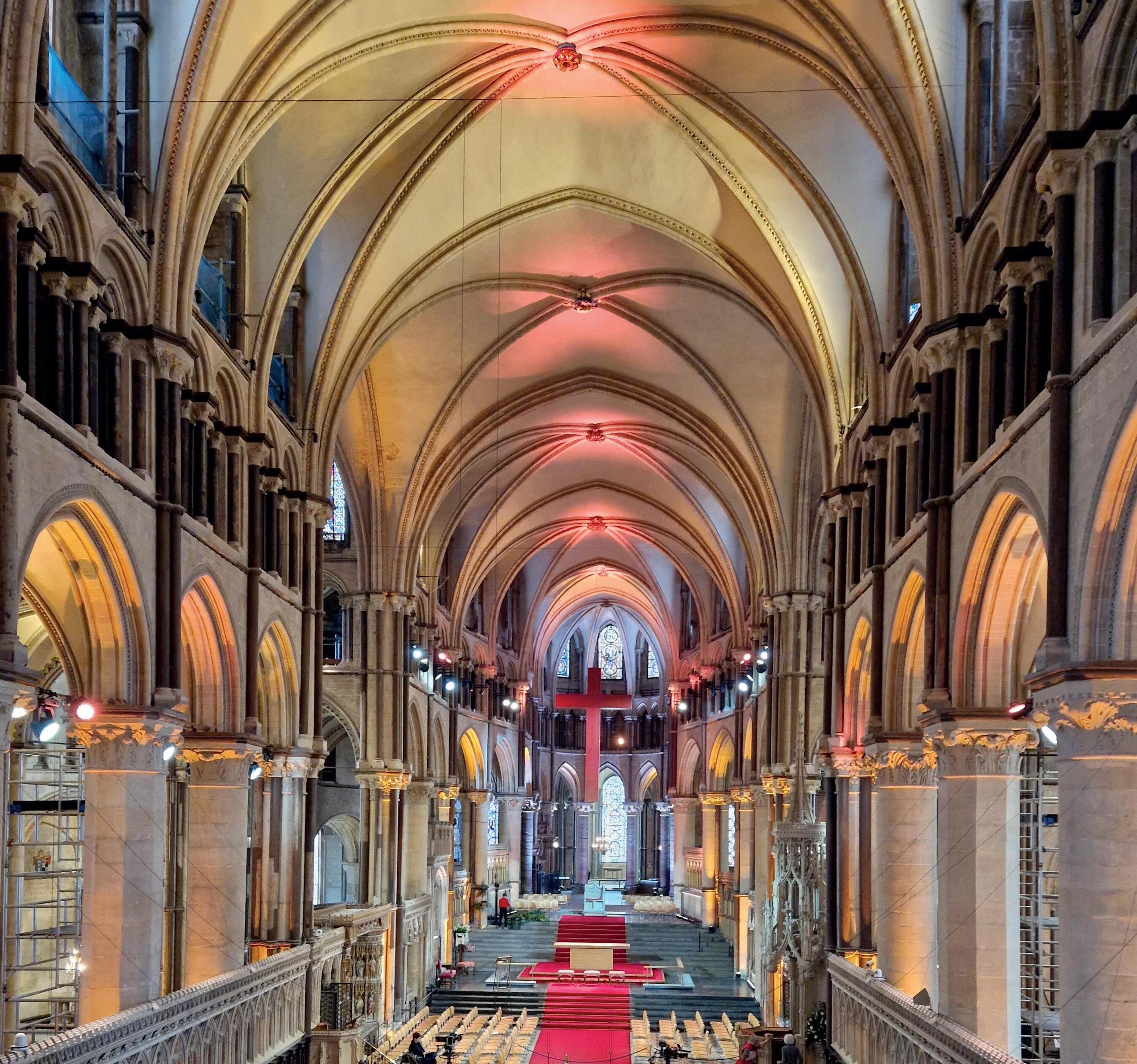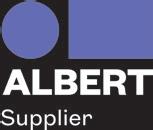


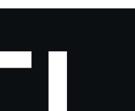











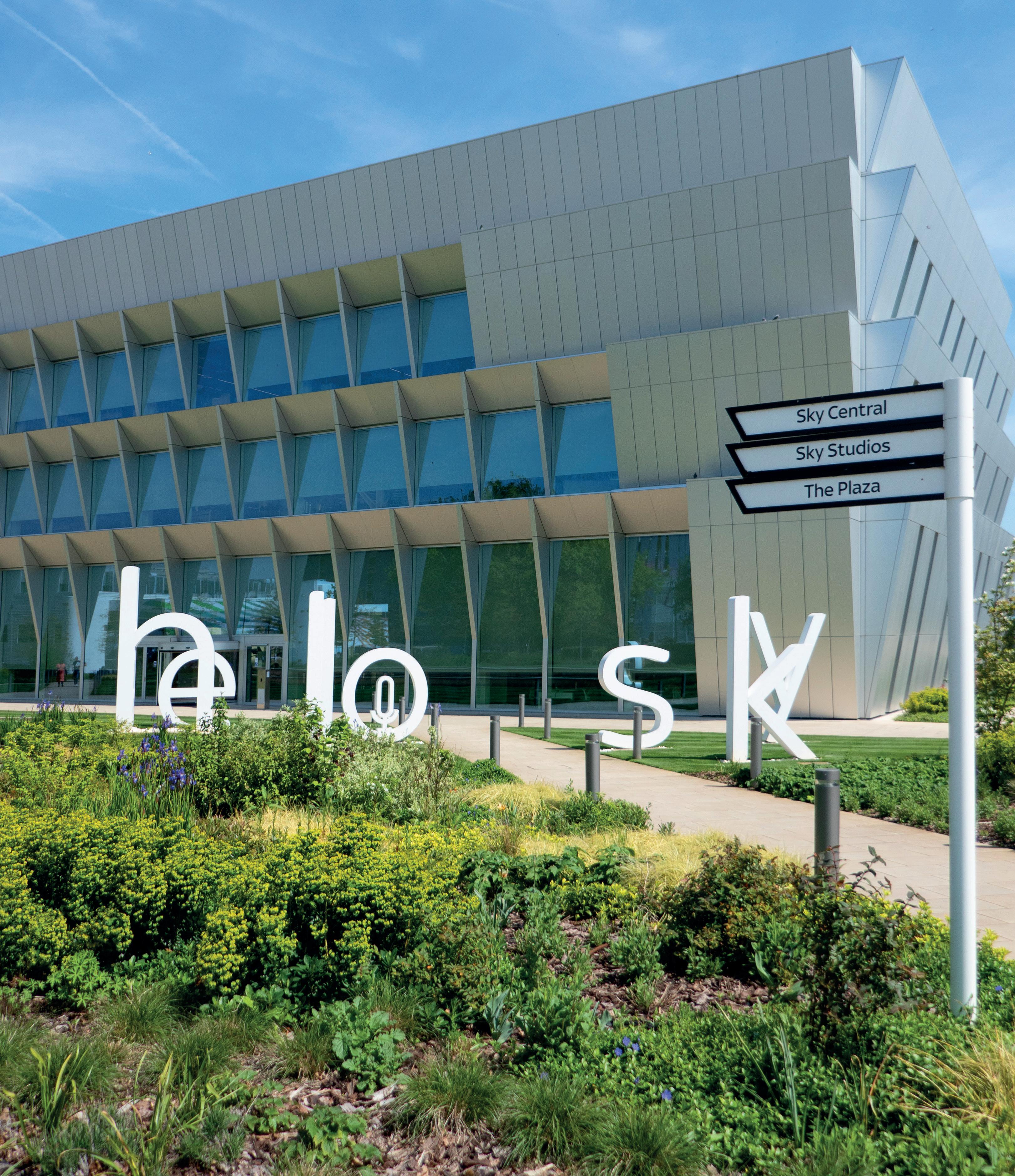
































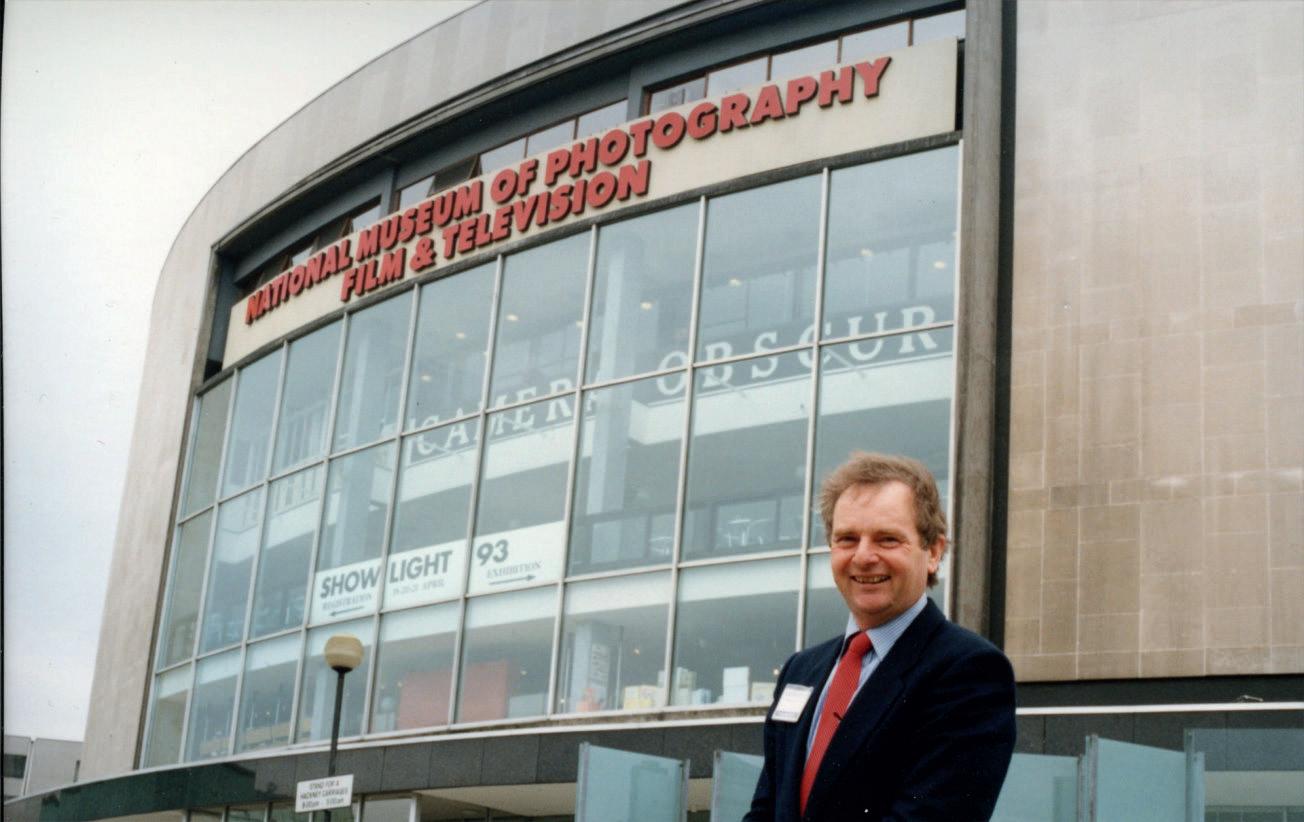








ation of 50 years of the STLD is to be held at Celebro Studios, 34 Better ton Street, London WC2H 9BQ on Saturday 26th October 2024, star ting at 12.00.
The event is FREE to all Past & Present members of the STLD, along with all Sponsors and their staff.
Other professionals, and students,who are interested in the histor y of TV Lighting, are also welcome to attend.
To request an invitation please email STLD50@stld.org.uk



Emma Thorpe editor@stld.org.uk www.stld.org.uk
Production Editor: Louise Ferne
Sponsor news: Emma Thorpe editor@stld.org.uk
Advertising: Emma Thorpe editor@stld.org.uk
Cover photo: Bernie Davis
Design by: Orignate Design
Published by: Purple Frog Creative
Deadlines for the next issue: 30th October
Advertising: 1st November
Advertising is accepted only from sponsor members of the Society




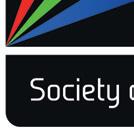



In this packed issue we feature our tour around Sky Studios, you will hear about Orjan Fjallstrom’s adventures combining a light installation with computer games, and we have part two of Declan Randall’s investigation into getting the most out of LED arrays. We also give you the rundown from PLASA Leeds and the results of the inaugural Profile Awards from Alexandra Palace.
The STLD will have a stand at PLASA this year – stand A1 – Plasa is on 1st to 3rd September at Olympia. Come and see us!
Our next issue Winter 142 deadline is 30th October. Sponsors, please send your news to editor@stld.org.uk and members are always welcome to send in articles about past TV lighting that you have done.
I hope you enjoy this issue.
| Below: Sky Tour: Robotic Cameras Sky Studios Tour
Stop the City Fire
The Profile Awards
Chairman’s Note
Showlight 2025
Plasa Leeds 2024
Part two of the ETC LED article
Backup Tech
Obituary’s: Robin Victor Rae & Richard Bunting
Sponsor News
Society Committee
Sponsor Directory
Membership Application

| 09



From the moment you arrive at Sky’s campus in Isleworth, West London you are struck by their attention to image and reputation. Beautifully landscaped grounds and modern buildings welcome you into their 21st century operation.
Built in 1989 for Sky Broadcasting as it was emerging as the giant it has become, the site has been regularly redeveloped and updated to meet the growing market for their range of programmes, yet this studio complex avoids the working factory image you associate with sites such as Pinewood and Elstree.
The largest of the buildings, Sky Central is home to most of the staff, who have access to the thirteen subsidised restaurants and cafes on campus, and even a staff cinema. To help Sky maintain its Carbon Neutral status



Version 2 are creative, independent providers of quality lighting equipment and specialist support to the television, broadcast and event industries.
Working alongside the industry’s finest Lighting Directors and Crews, we proudly deliver innovative solutions, technical assistance and dependable service, covering the complete production spectrum.
Our blend of equipment and experience has helped establish us as one of the UK’s most trusted suppliers. Whatever your project, our knowledgeable, friendly team are always ready to advise and assist with any aspect of your lighting requirement.
Version 2 - your perfect production partner.

staff can arrive by using the free electric shuttle bus service from Osterley or Ealing Broadway tube stations. This is a company that wants you to know that it cares about its staff and cares about the environment.
Over on the far side of the campus the building known as Sky 2 still has two of the original studios – Studio F is a general purpose studio, with a long and significant history for Sky going back to the 1990’s as was the second ever HD studio in Europe. However it is very much nearing the end of its life and is only lightly used now. Studio G was refurbished in 2018, including an LED upgrade for the lighting, and is home for Sky Sports Racing who are live on air every day for 12-18 hours, helped by the use of cameras mounted on a Shotoku automated camera pedestal system. But this building was not part of our meeting, and we went straight to the main studio complex.
The building that was originally known as “Harlequin 1” when opened in 2011, then later renamed “Sky Studios” also known as “The Keith Rupert Murdoch Building}, now houses studios that reflect how lighting and broadcasting has moved on over recent years, and this is what STLD members Mark Fowler and Richard Bowles had invited us to see. Mark is their Senior Lighting Electrician (Director), and Richard is one of the only two in-house Lighting Directors (together with Malcolm Reed) in a department that also has two team leaders and 13 electricians, and this list is topped up as required by freelance programmers and freelance electricians. We were not able to look in every studio as some were in use at the time, and in fact I was impressed how much were allowed to look at considering the studios were working at the time.
On our visit Studio 7 (9m x 10.5m) was in the process of being converted to become their permanent golf coverage studio. To improve the tracking of the cameras the floor had been levelled by raising it, so creating a
| Above: Studio 7
step into the studio. This is not an ideal feature and it is not the first studio to have this done, but it is more costeffective that re-laying the floor.
For reasons of economy it was decided to make this studio all tungsten lighting, and you can feel it when the rig is faded up. The studios use a natural ventilation system rather than regular air-conditioning, and although this usually works well they were finding that the set was ducting the air away from where it was needed. They would like to buy a new LED rig, and probably will in time, but if you still own serviceable tungsten lighting how green is it to replace it? Especially if the rig is not running for hours at a time. At least the lighting department got a final use out of their old lighting stock, even if they had to use up the last of their soft lights to complete the rig. This conventional studio had a conventional camera rig of peds and a Steadicam.


Studios 3 and 8 are similar sized studios, but we did not look in them on this visit.
The tour moved on to Studio 6 (9m x 13.5m) which we found just as it was when we visited in 2018 – one end has the traditional presenters desk with a set largely dressed by screens with graphic displays, and the lighting rig mostly uses ARRI Sky Panels and Source 4 profiles.

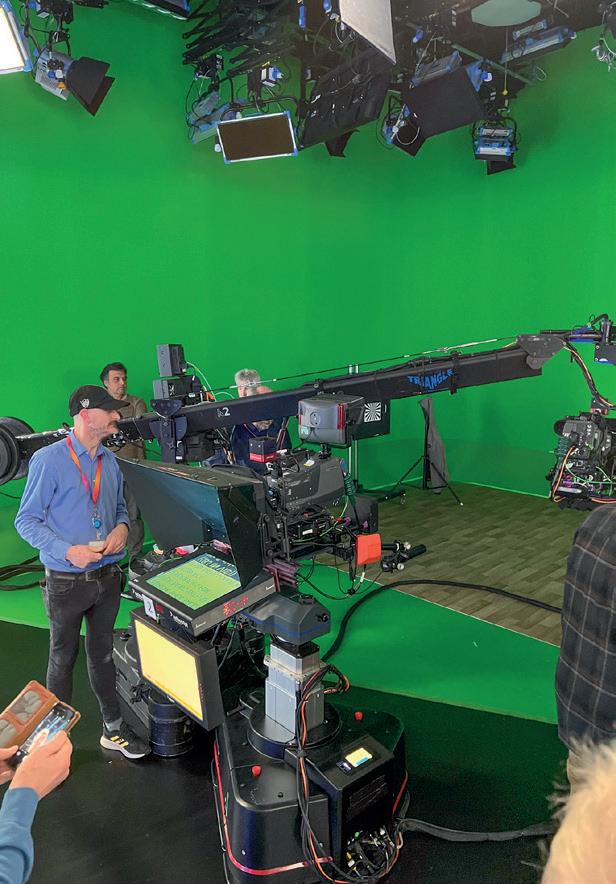
The other end is a ready to use green screen set-up that can also act as a back-up for other areas; during a recent refurbishment of Millbank this area filled in for their news broadcasts. The Shotoku remote ped system can allow for Virtual Reality imagery with its jib and with one of the two pedestal cameras.
Next stop was Studio 1 (15.0m x 10.8m), which was new at our last visit in 2018. Like Studio 7 the floor has been levelled by raising it, again creating a step. The rig is mostly tungsten with De Sisti 2k fresnels and the occasional tungsten Source 4 profile, assisted by 4x Robe 300 washes and Astera AX-5 uplighters. The set has three large LED displays for graphics as well

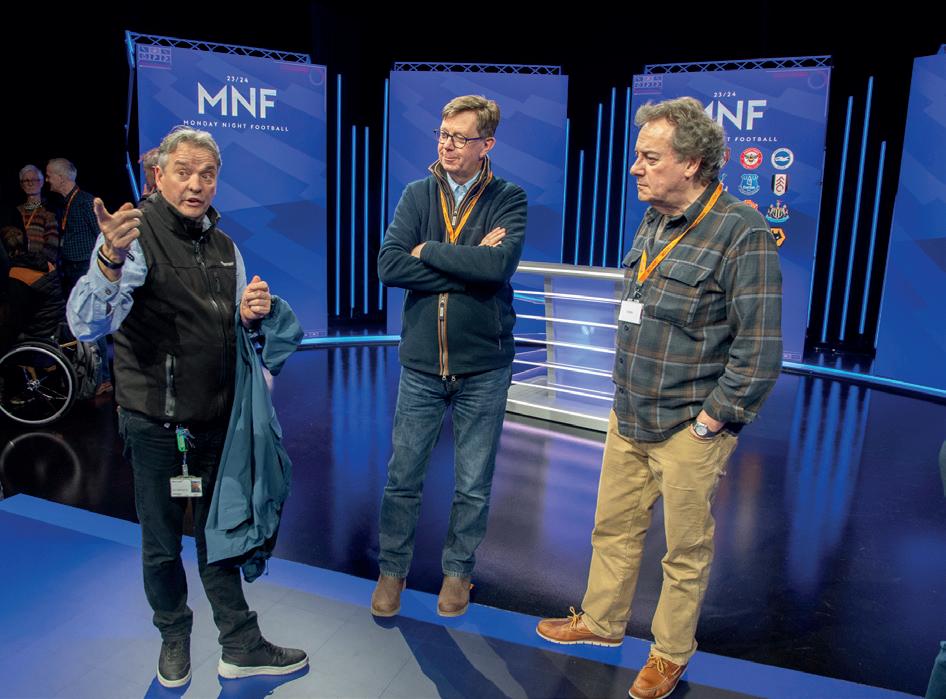
| Above:
Studio 6 Sky News (left). Green Screen area (right)
| Left:
Studio 1
Multi Sports
as an interactive touch-screen, all helping to present their different sport brands, all surrounded by large LED set panels.
The studio is 4K capable, and the cameras are set to UHD-HDR for EFL (non-Premiership Men’s Football) and HD-SDR for all other productions. This very versatile studio is in use four to five days a week.
Studio 4 (technically 4 and 5) has recently been developed to be a multi-sports studio for the 21st century, and for our 2024 tour this was the star of the show. The refurbishment brief was that they needed to be able to change quickly from one sport programme to the other, not just overnight but even during a commercial break! The approach taken by the lighting team together with the designers was to use Augmented Reality together with a largely moving light rig.
Sports as diverse as Formula 1, The US Open, Boxing, NFL, Football all with their distinctive identities can now be presented with just a cue from the lighting desk and a small move of the furniture. Its versatility was also to be used for coverage of the General Election. It did strike me that this speed of turn around must pass the pressure to the production teams and graphic designers rather than the lighting and design departments for the first time.



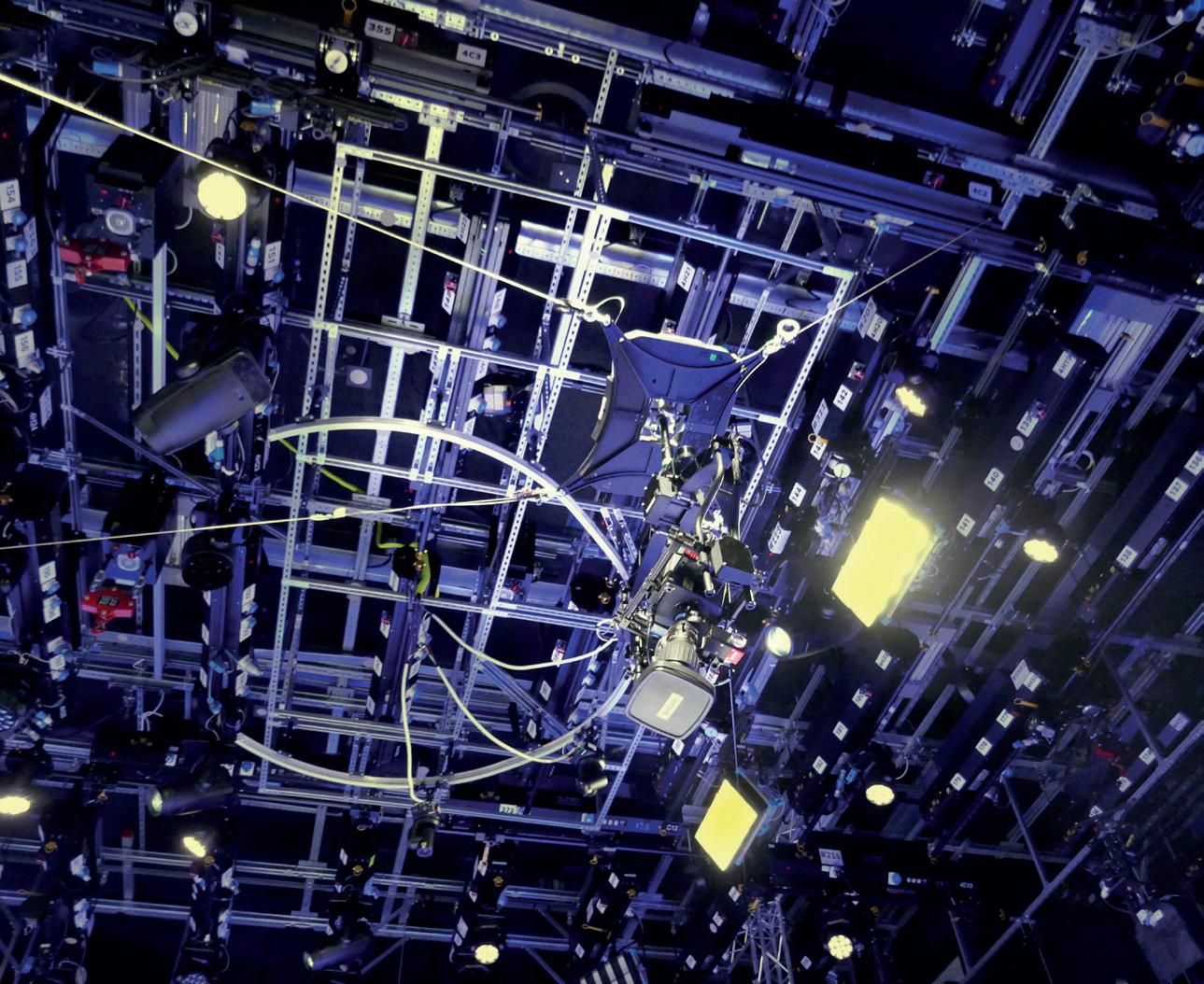
To meet this tough requirement the Sky lighting department researched different lighting manufacturers to see which products best met their needs, and they settled on 16 x Robe Forte HCF profiles as key lights, supplemented by a further 30 x Robe Esprite HCF profiles. 24 x Robe LEDBeam 350s act as backlights, with 12 x Robe Spiders providing colour and 18 x ARRI S60C panels adding ambience. The rig was chosen after tests with their Grass Valley LDX 86N cameras to see what produced the best pictures. However using washes and profiles rather than traditional fresnels has proved to be a learning curve for the lighting designers, but they now agree it works very well. The studio is also Robospot-equipped, but the system is hired in when needed.
The whole rig including Green Hippo servers is driven by an ETC EOS Apex 10 – they have just bought two of them that were still very new when we visited. The control data is sACN from desk to fixtures, which they had found to be a very stable protocol.
With such a large moving light rig you might assume that an experienced programmer would be required every day, but that is not the plan in the long run. Once all the different shows are programmed in the hope is that the main operation is largely run via the EOS Magic Sheet where touchscreen virtual buttons move the rig through the different planned operations. The intention

is that maybe a programmer can be hired for a rehearsal day, and after that the multi-skilled in-house lighting crew takes over.
The set is again largely made up of screens all fed by a large cluster of the latest Viz engines delivering a massive pixel count over the whole display. In between there are LED strips, and an overhead is a strip display, and to drive these a spare Viz output is partially fed to a Hippo Mayan+ Mk2 via an UHD-HDR capture card and this is then pixel-mapped to the custom LED tubes. This way they are all driven by the graphics department, so ensuring that the LED strips match with the screen content, so leaving the lighting department to handle the different areas that production are able to use – a typical round desk chat area, and an equally typical sofa chat area. They also have a standing chat area that includes a touch screen facility to allow interaction between the presenters and the graphics. Added to this, there is a large AR-dedicated area including an LED floor, built to show virtual demonstrations with different sports.
The camera operation includes a flying ‘Bat Cam’ camera suspended on wires, which causes the lighting department a few headaches not least as it determines the grid height. The camera is a bit larger than they expected too, and of course it is always in danger of crossing key lights. Fortunately it is not used as much as it might be.
Its shows are fully remote events with the cameras being a mix of UHD and HD that all get upscaled before they get to the mixer. The LDX 86N studio cameras run at 1080 progressive SDR Rec-2020 which then upscale to UHD, so reducing the real-time processing that would otherwise be needed in the Viz engines that generate the AR scenic elements such as interactive elements, ceiling and even camera masking. Not surprisingly this studio is already proving to be a winner having won awards for its superb output.

The dedicated Sky Sport News studio is in continual operation, and is the only Sky studio that mixes both overhead and ground based robotic cameras. The overhead tracks were designed and installed in 2020 at the height of Covid restrictions, which made the associated lighting changes a significant challenge.
The overall channel output and workflow was then completely overhauled in 2023 and relaunched with a brand new set and some refreshed lighting.
One row of desks we stopped to look at was where the remote operation cameras were controlled, where just one operator drove all the robotics. I assumed that all the operations in this area would be the same shots just repeated, which is why one person could cope, but apparently no. This must take plenty of skill and practice to do it successfully, but it seems that the cameras hardly ever crash into each other!


All these studios are run from a set of galleries that can all be cross-patched, adding to the operational flexibility and resilience of the broadcast centre. One change to working practices that came in during Covid is the remote direction of programmes – F1 was fully-remote pre-Covid, together with some semi-remote Premiership Football. Covid then condensed the planned 5-year further development and roll-out into less than 3 months. The default for the majority of live football productions, except those from small grounds lacking in 10G fibre connectivity, is now fully remote operation directed from the Sky Campus and the scale of achieving this took me back a little.
Most programmes now arrive at Sky via landlines, with satellite feeds just providing the location flexibility that news needs. Video via IP offers resilience and low latency and is now the delivery method of choice. To manage the size of the operation Sky’s MCR area has a staggering 60,000 lines coming in, and a single football match would use from 50 to 150 of these lines. Each camera takes up four lines, and on football this total is increased considerably with VAR feeds and touch line cameras.
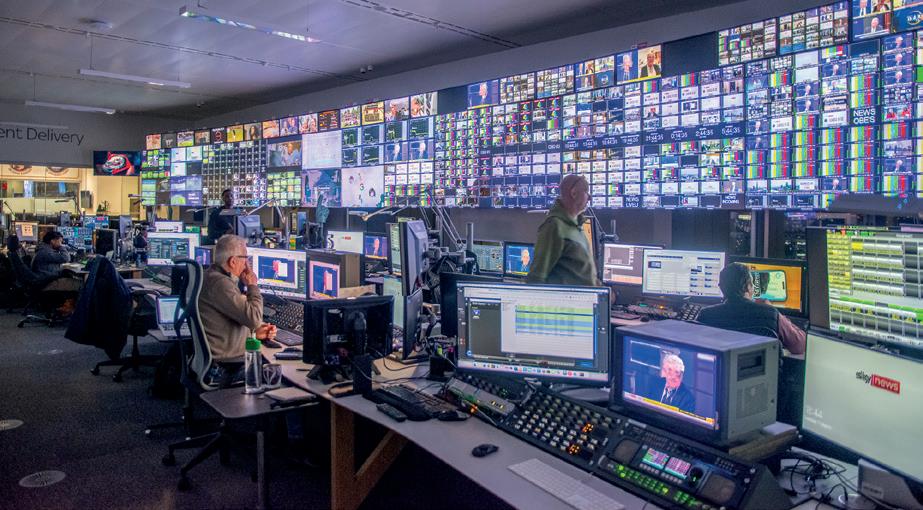

Formula one can easily double this requirement once you take into account the driver cameras and pit crew cameras. However remote production not only reduces costs, it also helps to reduce Sky’s carbon footprint.
The cost, and all-important CO2 savings subsequently made by reducing under-utilisation of equipment and crew are enormous, not just quickly paying the cost of for the extra infrastructure and also that of fully rebuilding five entire Galleries, but also bringing a significant increase in both the quality and quantity of live football coverage, including the 1st and 2nd divisions as well as women’s football getting a major push and a lot of studio time – long before the Lionesses success at Euro 2022. Next season they will be offerings their subscribers in excess of 1,000 football games to watch… by use of virtual production galleries and streaming.

The gallery and monitor stack that can handle this operation is a very impressive sight. One end deals with all these circuits coming into the complex, with the other end handling all the networks going out, another operation that continues to build as new channels are added.
The tour left us in no doubt that sustainability was a high priority in the Sky business model and their ambitions, and I noted a quote from Sky’s website: “With a desire to build its brand and reputation and use its media presence to campaign for the environment, Sky became CarbonNeutral® in 2006 which it has maintained ever since. It was the world’s first CarbonNeutral media company and built the world’s first TV to be certified as a CarbonNeutral® product in 2021.”
I also understand that Sky is now aiming to be Zero Carbon (not just Neutral) by 2030, so no more offsetting or carbon capturing. We saw their balanced decisions in their lighting spend, with decisions being made over re-using and replacing equipment. But being vertically integrated with tight control over their entire supply chain, their impact by lowering the standby power of 12+ million set-top boxes quickly dwarfs the replacing a few 2k fresnels.






MAGICDOT, released in 2015, was a revolutionary luminaire that still inspires creativity. Nine years later, Creative Solution series has been expanded to include its first IP65 laser source luminaire: KYALAMI.
This new ultra-compact luminaire has incredible creative potential...
The essential performance capability of KYALAMI is based on its unique design and extreme miniaturization. A sphere of only 265 mm incorporates a laser module of 100 watts, its cooling and optical system required to generate effects.
A creative, elegant, original, lightweight and fast luminaire, conceived and designed to be unlike any other. KYALAMI will disrupt the codes and unleash the emotions.

| Words and
pictures
by Orjan Fjälström
My long sought after dream to combine fine culture with Swedish computer games came true on one particularly cold November evening in 2023.
Five years earlier, in spring 2018, I entered the coffee room at East Sweden Games (ESG) for the very first time. The gaming community wasn’t quite publicly available yet, so I had to get a recommendation for this game development meet up. It consisted mainly of students from Linköping University, but also people from different gaming companies. Every Thursday, the door is in fact open for the public. Fika (Swedish for coffee and cookies) is served, and you get to sit in whilst an interesting speaker is on stage, talking about such subjects as animation, game light and LOD optimisation, music and copyright etc. Attending these lectures can be very stimulating even for people not explicitly working within the gaming industry, and I have often felt impressed with the depth and creativity of these lectures.
I have long had an interest in computer games, being young in the 80s and buying the first Donkey Kong games. But one of my first attempts at combining games and physical light design wasn’t until much later, in 2017. At a public swimming pool in Skövde, Sweden, me and my team created an interactive pool where fish from a very simple game were projected

| Above: Central Palace
onto the surface and as someone swam near them they would swim away, although every fifteen minutes we programmed a crocodile to swim straight through the crowd. The pool still has the installation to this day, but every once in a while they will change the fish.
Thomas Ahlström and Carolina Olsson welcomed me to ESG and I expressed my interest in a future collaboration. They showed me around and told me more about the Thursday-lectures. The event quickly became something I prioritised on the days I was not stuck in production. It takes time to immerse yourself in a new culture. Over the years I would occasionally run into Thomas, and we would discuss the cultural clashes between high end culture and computer
games. Thomas is also the director of Linköping Game Week and in 2023, this event coincided with Linköping Vinterljus (winter lights) which consist of different light installations along a walk that takes you through the city. That year, I was asked by the city if I was able to make a light installation in collaboration with East Sweden Games, that would also be a game made for the public. Without hesitation, I said yes.
The Linköping based company Pixilab, have during the recent years developed a software which allows museum visitors to use their phones to interact with different exhibitions. This felt like an interesting user interface for the project, and a way to not have to bring several keyboards and mousepads outside somewhere in the city. Three different

locations along the walk for the winter lights were suggested, but the city rejected them and insisted that this installation should be at the biggest plaza in the city. It put me in a bit of a pickle, since there was no appropriate place for a game installation on the plaza. After analysing the environment for several days, I landed on the façade of Central Palatset, which had potential. The main issue was that we had to be able to place a large projector within working distance and with enough safety so it wouldn’t get stolen and also not block the traffic on the plaza.
After some research it turned out that a building that had been in the same place as Central Palatset had started a city fire in 1700. I tried to get some more information about the fire and got help from the historian and previous conservator for Old Linköping, Gunnar Elfström.
He was able to provide me with a literature list which I promptly brought with me to the city library. The librarians looked at me wide eyed as I gave them the long list, but once I explained myself they said that they knew Elfström very well and that I would surely find what I was looking for. It was important for me to get the history right, so that I could properly merge the two cultures, gaming industry and stage art.
Next up, building my gaming team. I got into contact with Pixilab and they agreed to help build the bridge between the computer game and cell phones. Then I contacted ESG to ask them to help me find some students that would like to be part of this project. Because the game we were going to develop would have to be quite simple, I decided it would be a good idea to share this opportunity with newly emerging actors. ESG provided guidance throughout the
On January 29, 1700, the city was hit by an extensive fire that destroyed practically all buildings. Some stone buildings, the castle and the cathedral survived. At 11 pm on the night between 29th and 30th of January 1700, the customs official Anders Leenström came to his farm by the square where the Central Palace is now located. He had previously visited the country secretary Leffler. At Leenström’s stable was the farmhand Sven Nilsson. Nilsson had put his lantern down on the floor and left it unattended for a short while. When he later returned, the straw had caught fire and the flames reached the roof. One of the horses had kicked the lantern. Nilsson understood that he could not put out the fire himself and to get an alibi he ran up to his comrade in the servants’ quarters and got into bed. His stepmother woke up to the smell and alerted the people in the house. The fire spread with rapid speed due to the prevailing storm to the adjacent farms. The fire continued towards Sankt Lars church and Stångebro. The church survived thanks to its walls and only the railings of the bridge burned up. The sparks from the fire even spread across Stångån to a stamp mill on the east bank that belonged to the town’s chamois makers. The county governor Lars Eldstierna sent a report to the king on 31 January 1701 about the city’s situation, all in all there were 136 farms, 19 barns and 6 barns that burned down.
References: Salomon Kraft och Folke Lindberg, Linköpings historia, Almqvist & Wiksell 1946
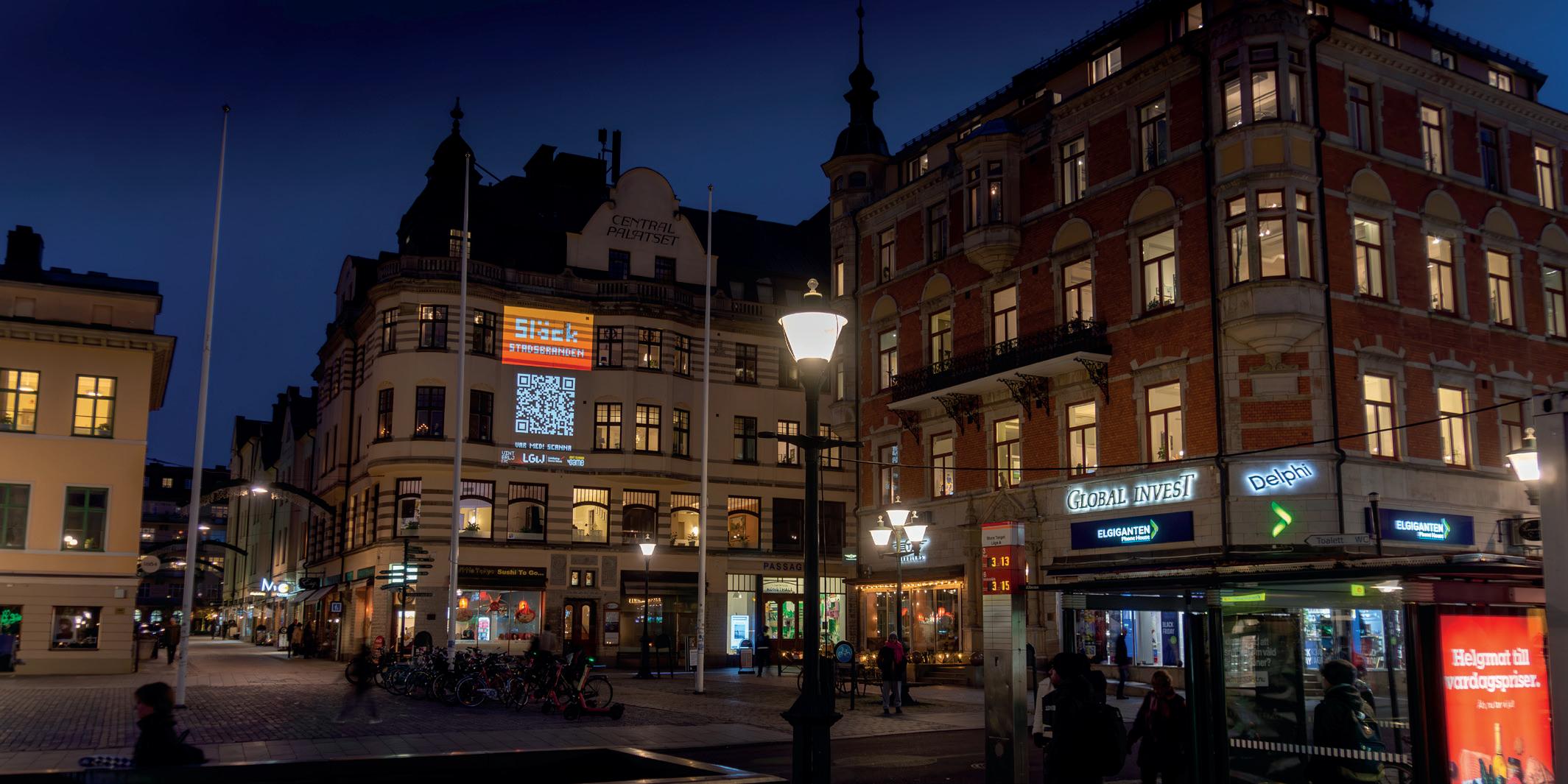

| Above:
Tomas Ahlström
Örjan Fjällström
Jim Magnusson
Niklas Wigertz
Alexander Ma
project and were against using Pixilab because they thought their software package was too complex. Instead, they suggested to simply let users connect to the game through a QR-code. We tried a few different game models, and after some trial and error, we ended on a simple world where users had to try and put out a fire spreading through the city. Several users were able to connect at the same time and collaborate. We were planning to add a limit to the amount of people that could play simultaneously, but it got lost along the way and after looking at the statistics the most amount of people that played at the same time were 26. In total over 1700 people tried the game. The goal was to get games out of the house to come and try our game, and to get the “culturally sophisticated” to stand next to them as they are both trying to put out the fire whilst guiding their figure on the screen. We wanted to encourage all kinds of people to take up their phones and interact with the installation.
With dread, I signed the contract where I promised that everything would be ready and working on Thursday the 16th of November at 4 pm. It was difficult since I don’t have the knowledge at all about what it takes to produce a computer game. In the contract, I was the art director and thus responsible for the success of the project. The city had also refuted all my suggestions for where we could set up the projector for the installation and eventually, we had to place a big container on the plaza.
During the project I realised that for gamers, the world ends at the computer screen. But for the performing arts, it goes beyond the stage and to all the technical things surrounding it. This was another culture clash to take into consideration. It was quite exciting to see the students in their thick winter coats, inspecting the big container where they had to set up their workspace which would bring their computer game into the physical world. It took several hours, but once it was up and running, we could sit back at a near by café and
watch as the passing public would stop, take up their phones and begin playing. Every game only lasted about 3 minutes.
In total, the project was a great success, and we reached our goals. In hindsight I wished we could have encouraged the gamers to find each other on the plaza, to shout instructions to each other and collaborate even more. This is common in the gaming world, but not so much amongst us cultural people. We will simply have to learn.

The industry’s best-selling Bi-Color LED panel has evolved. Astra IP is tough and water-resistant, delivering intense output in lightweight 1x1, half-size and 2x1 fixtures with fast set up for high-performance broadcast lighting in demanding environments.

litepanels.com/astra-ip










| Intro from Stuart Gain

The idea of these awards came from Durham and Jennie Marenghi. Durham was keen to have an awards ceremony that was only for lighting, and felt the time was right to do this. He contacted myself this time last year to firstly see if I would again be Chair of the TV Judges and to see if the STLD would be happy to come on board. Having spoken to Bernie Davis about this we put it to the Committee who agreed this would be good.
Our main concern was how we would get the word out to the LDs and their teams in order to have enough nominations given the short timescale. However, in the end nominations came forward and gave the Shortlisting Team (made up of myself, Bernie Davis, Alan Luxford and Ross Williams) a job to do! We narrowed the nominations down to three per category which then went before the Judging Panel.
Here’s the details of the Profile Awards from Durham and Jennie: The inaugural Profile Awards were held on Thursday the 6th of June at the Alexandra Palace Theatre and was attended by some 200 guests of which half were lighting designers or members of their
teams; the Headline Sponsor was Ayrton.
The Profile Awards have been created and are coordinated by Durham and Jennie Marenghi in association with the ABTT, the ALPD and the STLD; the Awards recognise lighting design excellence in Theatre and Television in the UK.
Alongside eight specific Theatre awards and six Television awards there was a Student Virtual Lighting Design competition sponsored by AC-Entertainment Technology and won by Rose Bruford student Tom Lee
The Richard Pilbrow Lifetime Recognition Award by kind agreement with Richard’s family and sponsored by Theatre Projects was this year awarded to David Hersey for services to lighting design and the lighting profession in general.
The Theatre Awards were judged by UK theatre critics and were not open to nominations whereas the Television Awards were judged by broadcast professionals and could be nominated by anyone. Nominations for the 2025 Profile Awards are now open, details of
| Above: Host Durham Marenghi (main), TPA organisers Durham and Jennie with our Awardess and sponsors (inset)
how to nominate can be found on the Awards web site: www.profileawards.com
The Awards trophies are Patt 23M fixtures on stands, a miniature LED version of the iconic Rank Strand Pattern 23 profile fixture modelled and produced in limited amounts by Hugh Chinnick.
Sponsorship take-up has been incredible with all the 16 Awards being taken up by the industry in as many days, the Headline Sponsor is Ayrton with the Television Awards being sponsored by ChamSys, ELP Broadcast Lighting, LCR, Light Initiative, Roxxlight and Version 2 Lights.
The Theatre Awards were sponsored by Chauvet Professional, Elation, ETC, Fix8Group, GLP, TSL, SLX and Vari-Lite; the pre-show bar was sponsored by Ambersphere Solutions and the Goody bags at the end of the night by JLL. Other sponsors included Cameo, Encore and ER Productions.
The TV section of the Profile Awards was judged by our panel consisting of Theatre Lighting Designer Peter Small, TV Lighting Designer Martin Kempton, TV Director Stephen Neil and Chaired by STLD Honorary Secretary and Lighting Designer Stuart Gain. Congratulations to all our Awardees.
The theatre section of The Profile Awards was judged by eight of the UK’s leading theatre, dance and opera critics. Every single new production they saw was automatically eligible for consideration.
Here are the results: The Profile Awards 2024 Television Awardees Entertainment – Series Award sponsored by Version2 Lights: James Tinsley and team for ‘The Traitors’
Entertainment – One Off Award sponsored by Lights Control Rigging: Tom Sutherland and team for ‘The Brit Awards’
Drama Award sponsored by ChamSys: Gavin Finney and team for ‘Good Omens Season 2’
Small Studio Award sponsored by ELP Broadcast Lighting: Neil Kent, Ben Richards and team for ‘The Repair Shop’
Newcomer Award sponsored by Light Initiative: Jack Woodstock
Special Merit Award sponsored by RoxxLight: Martin Kempton
Other Awards
Richard Pilbrow Lifetime Recognition Award sponsored by Theatre Projects: Awarded to David Hersey
Student Virtual Lighting Design Award sponsored by AC Entertainment Technology: Awarded to Tom Lee from Rose Bruford College for ‘Exigence’
The Profile Awards 2024 Theatre Awardees
Outstanding Achievement in Theatre sponsored by Chauvet Professional: Simon Wilkinson for ‘Ragnarok’, Tortoise in a Nutshell, Traverse, Edinburgh & tour
Outstanding Achievement in Theatre sponsored by TSL: Ali Hunter for ‘Red Pitch’, @sohoplace
Outstanding Achievement in Musicals sponsored by GLP: Emma Chapman for ‘The Third Man’, Menier Chocolate Factory
Outstanding Achievement in Opera sponsored by ETC: Robbie Butler for ‘Death in Venice’, Welsh National Opera and tour
Outstanding Achievement in Innovation sponsored by Fix8Group: Tupac Martir for ‘Find Your Eyes’, Manchester Academy, Manchester International Festival
Outstanding Year In Dance sponsored by Elation: Tom Visser for ‘La Ruta’, ‘Assembly Hall’ and ‘Carmen’, all at Sadlers Wells; ‘From England With Love’, Queen Elizabeth Hall.
Outstanding Year in Theatre sponsored by Vari-Lite: Jon Clark for ‘Dear England’, Olivier, National Theatre and West End; ‘The Motive and the Cue’, Lyttelton, National Theatre and West End; ‘The Effect’, Lyttelton, National Theatre; ‘Stranger Things – The First Shadow’, West End
Outstanding New Designer sponsored by SLX: Skylar Turnbull Hurd for ‘These Demons’, Theatre 503
The event was very successful and we congratulate all those who were nominated. We would also congratulate Durham and Jennie for all the work they put to making these awards such a success.
The STLD is proud to be associated with these awards and looks forward to many more nominations being put forward for the 2025 awards.
Stuart Gain Chair of TV Judges and STLD Hon. Secretary


| Words Bernie Davis
As reported in this issue of Set & Light the first Profile Awards was held at Alexandra Palace in June celebrating excellence in lighting on the stage and on television, and our congratulations go to the first to receive awards. Winners and viewing clips can be seen here: https://profileawards.com/ television-awards/
“You can nominate as many shows as you wish, and you need not have worked for them...”
We said when the event was launched that we would learn from the first year and improve where we can for next time. First of all after the success of the first time there will definitely be a second time so you should already be watching for shows to nominate for 2025:
Any show first broadcast between 1st May 2024 and 30th April 2025 will be eligible. You can let us know now if you want to recommend something, just remember that we will need a viewing clip of up to ten minutes duration to judge, either as a file or as a free-to-view link. In 2025 we are introducing two new categories.
The first is best lighting in a continuing drama (or ‘Soap’ as you
might know it!). The nomination must be for an individual episode so watch out for those special moments. This addition is to recognise the skills seen in shows that work in a very different way to the big TV dramas in both time and budget.
As we go to print the second new category is being discussed. We are looking at all areas of expertise that can be overlooked by the other categories and will be announcing the full and final list very soon on our website and by email to members.
You can nominate as many shows as you wish, and you need not have worked on them to put them forward, so please send your nominations to: profileawards@stld.org.uk
















































































This autumn the STLD will be celebrating its 50th anniversary and we hope you will be able to join us for a meeting to look both back at how we started and the industry that gave rise to those pioneers of the STLD, and also forward to today’s twenty-first century lighting methods that could not have been imagined back then.
The meeting will be on 26th October in what used to be the Hospital




































Studios in London’s Covent Garden – the studios have recently been reopened under the management of Celebro Studios with offices in London and Washington DC, where they have cleverly made a studio space that quickly changes from a fully-equipped corporate streaming studio to a ‘shiny-floor’ studio space to meet broadcast needs.
We will have two presentations, the first to give a taste of how the



















business was fifty years ago, with a look at the equipment, the characters and the companies from that time. The second will look at where TV lighting has got to in 2024, with a look at modern practices and needs in a business that has progressed beyond anything our founders could have imagined.
More details of the speakers will be released in time, but we can say that we will have equipment old and new to look at, in-depth observations and anecdotes galore, the opportunity to look around the studio and at its allLED lighting rig, and of course there will be food and drink.
Details will be added to the STLD website as this meeting develops, and of course members will be sent invitations as a flyer nearer the time. Attendance is free and if you would like to come please email: STLD50@stld.org.uk


Showlight 2025 is Calling for Speakers to present Papers at the next Showlight, slated for 19-22 May 2025 at Le Parc des Expositions et Congrès de Dijon, France.
The Papers Programme is the heart and soul of Showlight and we want to present our delegates with a wide variety of interesting subjects to educate and entertain. This will be the first in-person Showlight since 2017 and we are looking for exciting new projects from all
disciplines of light and lighting to include in the 2025 Papers Programme.
Have you worked on a fabulous new project recently? Have you tried out some new technology and got something to share? Does your design really cut the mustard? We want to hear from you in Dijon! The Papers Committee has already begun the process of selecting Papers for the programme. If you have an idea, a story or an experience you’re burning to share, tell us about it.
Date: 19 – 22 May 2025
Location: Dijon, France
Venue: Le Parc des Expositions et Congrès de Dijon
Contact the Papers Committee on papers@showlight.org All we need now is an outline. You can fill us in on the tasty details later! Spread the word. We want you!
Showlight could not take place without its generous sponsors and we thank Robert Juliat for remaining as our Headline Sponsor for 2025. We also want to extend our thanks to our new sponsors:
Diamond Sponsor: Ayrton.
Platinum Sponsors: Robe, MA Lighting, ETC, Chauvet, Starway, Elation and Claypaky, Palladium Sponsor: FACE.
Gold Sponsors: Avolites and PRG, Silver Sponsors: Martin Pro and Ambersphere Solutions.
Bronze Sponsors: ACET and LSC.
Plenty more opportunities exist to become a Showlight 2025 sponsor, including sponsoring a student or a speaker. Contact Matt Hallard on sponsorship@showlight.org for more details.

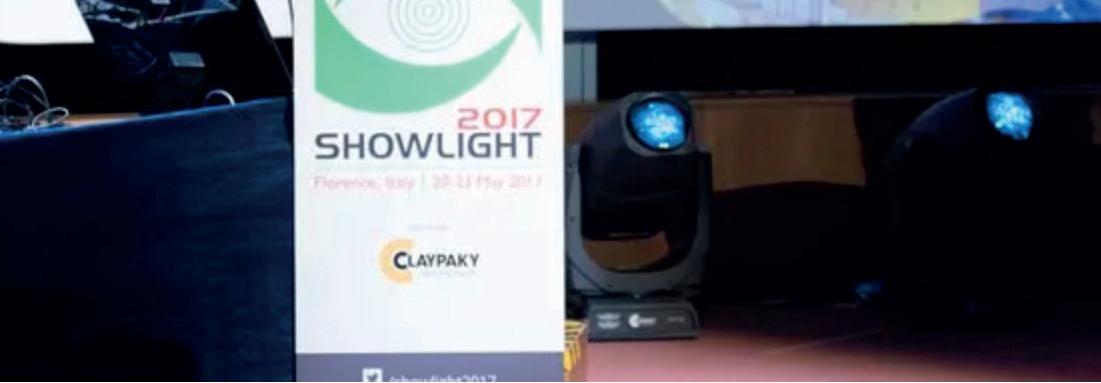
We are also inviting Exhibitors to participate. If you’d like to support Showlight 2025 by taking a space, contact us on exhibit@showlight.org www.showlight.org

@showlightevent
showlight_event
@showlightevent




Dijon, France : 19-22 May 2025




Have you worked on a fabulous new project recently? Have you tried out some new technology? Does your design really cut the mustard? We want to hear from you in Dijon!
The Papers Programme is at the heart of Showlight and we are searching for speakers on a wide variety of topics. If you have an idea, a story or an experience you’re burning to share, tell us about it! Please email papers@showlight.org with your proposals, or submit via the website.
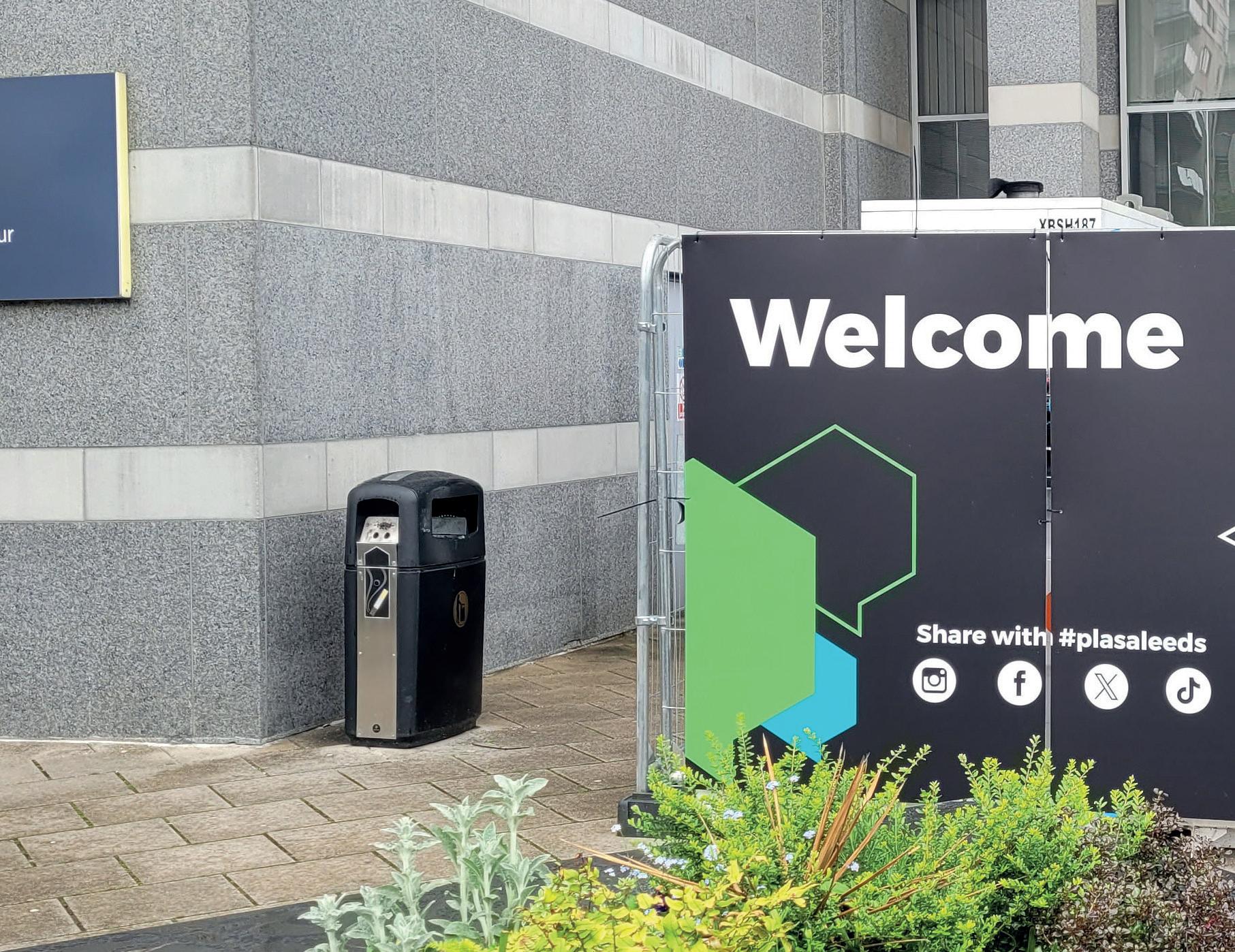
If you like Plasa then you will love Plasa Leeds, it has all the interest of finding out what is new in the lighting business, all the pleasure of catching up with friends and colleagues in a more friendly Northern location, and is smaller so more intimate than its bigger relation in London.




Set in the Royal Armouries Museum Leeds in the redeveloped docks by the river Aire it is a great place to visit anyway, and if you can go for both days of Plasa Leeds so much the better.





weren’t new they were certainly recent, and new to me.
it is much more than a searchlight as the combination of the 0.4° – 8.5° zoom range, static and rotating gobo wheels, and what they refer to as an innovative Effect Engine consisting of 6 prisms placed on two wheels, producing 12 various Beam and Flower effects it becomes a versatile effects light powerful enough for any stage. Robe’s AirLOC system helps keep the inside clean so improving long-term performance and increasing the time between the need for servicing.

Robe always put so much into their displays at exhibitions, and a few of their products were of interest to me – and if they

The Robe i-Bolt is a mini-searchlight fixture that is seriously bright, its 500W white laser source delivers 120.000 lx @ 100 m at its peak. But
Then at the other end of the spectrum they have the new addition to the T series of LED spotlights, the T15. They come with options of Fresnel or PC lens and offer optional accessories such as four or eight leaf barndoors and a pole-op kit. Their 350w LED engine offers full RGB or CMY control, or even direct control of the RGBAL emitters and of course is




flicker-free. Coming with a dedicated plus and minus green channel and colour temperature adjustment from 2,700K to 8,000K, this fixture is clearly aimed to cater for TV and Film demands.
TMB can supply so many products from their Solaris range of LED fixtures to architectural products, to rigging and data systems. Featured on their stand were the neat Solaris Mozart pixel panels that make good eye-candy arrays for stage dressing.
The Solaris Flare XL is a very bright IP65 long throw LED panel that comes in three sizes: the XL 36, XL 72 and the XL 120, with the 120 giving an impressive 100,000 lumens from its RGBW LED array. Interchangeable optics plates can offer 9°, 26°, 36°, or 50° optics. But the product that I had not seen before was a structure by which you can arrange the fixtures


into a line array, much like the speaker stacks seen at the sides of stages or on delay towers. I am sure these will soon appear at a festival near you!
Coming soon from TMB is the ProPlex Code Commander, a versatile module that converts, manages, and distributes timecode.
It can receive timecode over:
• Ethernet - Art-Net Timecode and RTP-MIDI (AppleMIDI)
• USB MIDI
• DIN-5 MIDI
• 2x LTC in on XLR-Jack combo
It can then send timecode over Ethernet and 12 balanced timecode outputs:
• 4x XLR3
• 8x on interchangeable panel with different connector options (DB25, CPC, 1⁄4” Jacks)
Other features include signal shape regeneration and jitter reduction, and output level adjustment up to +6dBu (independent for XLR and optional panels).
With timecode being shared by so many departments now there must surely be demand for products like this with the flexibility they offer.
ETC have a new Fresnel completing their fos/4 Fresnel range, now you

PAR jr. As its name suggests, it is a compact version of the ColorSource PAR, also using a red, green, blue and lime LED array to give a good range of colours, with a choice of chip-sets to give either better whites or deeper colours. The fan-less design helps to keep the rig noise to a minimum, and its 150mm x 250mm size keeps the ColorSource Junior discreet on set.
can get them in in small medium and large (5” 7” and now 10”). Near field communication (NFC) enables you to push and pull information including fixture setup using ETC’s Set Light app from your mobile phone or tablet, even when the fixture isn’t powered. Much like the Lustr fixtures they come with the option of Daylight HDR array or Lustr X8 array for maximum brightness or optimum colour quality.
The popular ColorSource Par now has a smaller relative, ColorSource
Clay Paky’s Volero Cube ip66 moving head has 4 x 60W RGBW LEDs and 4 lines of cold white strobe LEDs split into 8 areas, combining multifunctionality with an interesting stage appearance. Its 4°- 55° zoom range makes the Volero Cube compact and powerful, but Clay Paky are developing a new mounting that lets you connect a number of cubes together to work as a block. You fix them in a row and disable the pan function to get a jumbo version of the Volero Wave. This is still in development but I’m sure it won’t be for long.
The GLP JDC1 is a hybrid LED wash / strobe fixture that has been around for a while, but just announced is the JDC2 IP. Obviously IP rated it is also a little bigger than the JDC1. It has over 1700 LED pixels on its 1,025 cm² pixel matrix face, and while you can take over individual control of
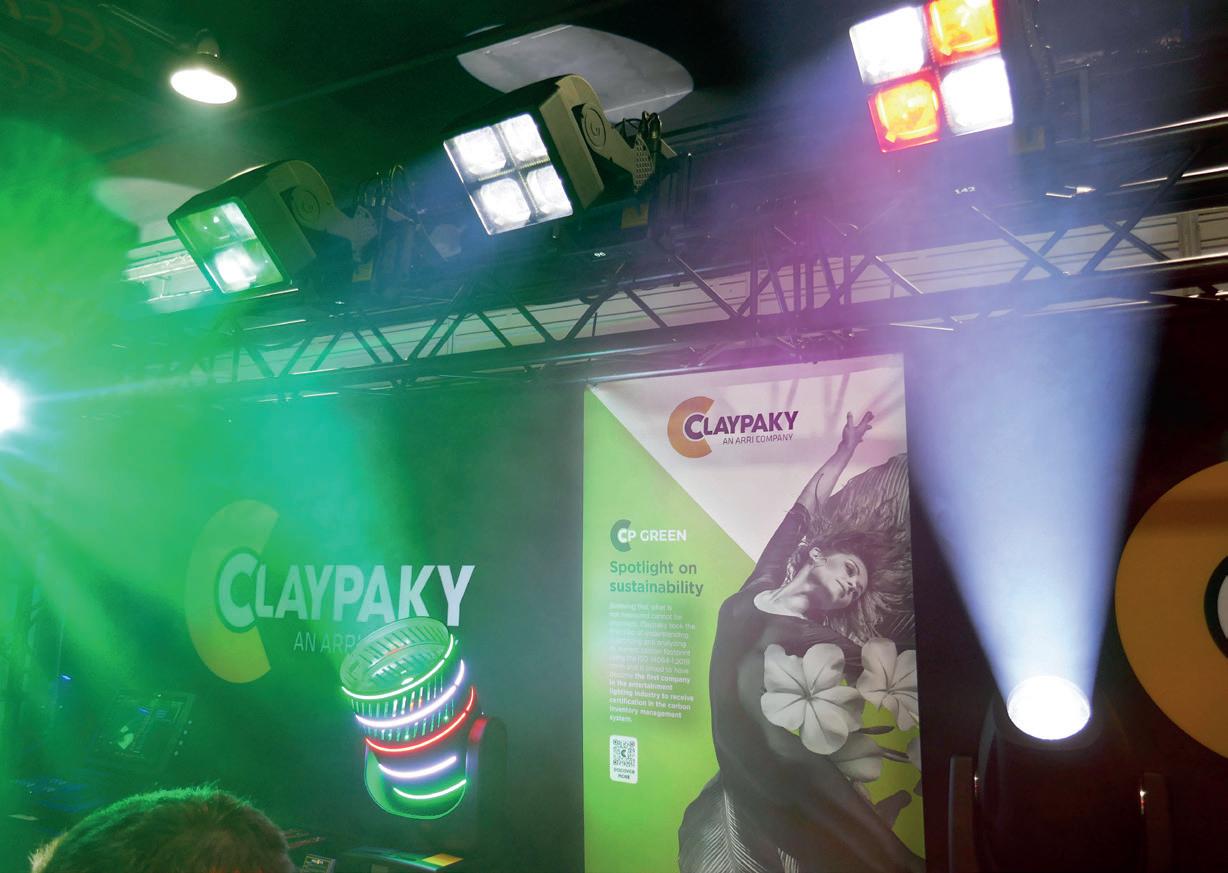


all of them, GLP have built over 100 different graphics clips into an internal FX engine that can be controlled and adjusted effectively giving you a gobo function that is easy to use. You can import graphics and video too, letting the JDC2 IP be its own server as well as fixture.
A central strobe tube contains 84 high-powered, 10W cold-white LEDs that give a massive impact. Only just launched, the first JDC2 IP units were only shipped in March this year.
My only comment, why does such a creative lighting tool not have a more creative name? Just a thought…
Vari-Lite 2600 series has been a popular and versatile fixture for some years now, and they have now launched their VL 2600 SE series that includes the VL2600 SE Wash and VL2600 SE Profile. They have also developed an improved light engine upgrade, and from its 570W light engine you get an impressive 23,750 lumens from the SE Profile and 27,500 lumens from the Wash. Vari-Lite have sustainability high on their priority list, and they have made the new engines completely recyclable. It is hoped that this significantly increased output will help extend the life of this popular range of fixtures. The upgrade process can be performed simply and quickly by a qualified technician. The STLD had stand space thanks to
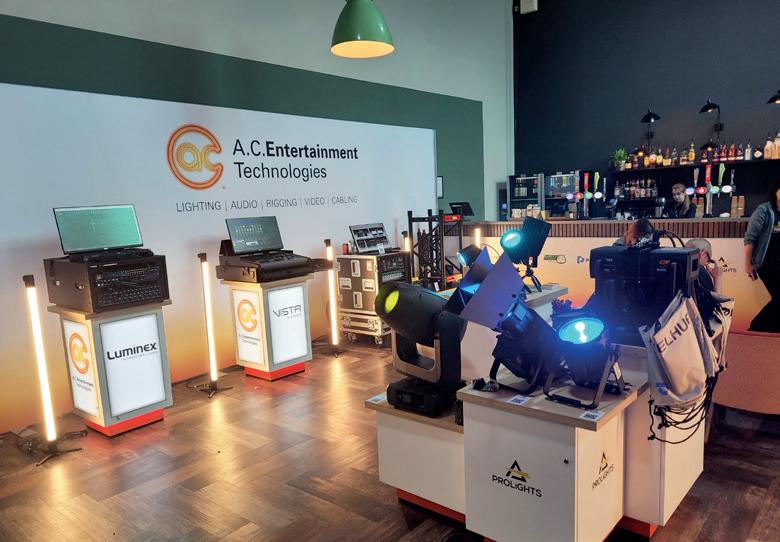
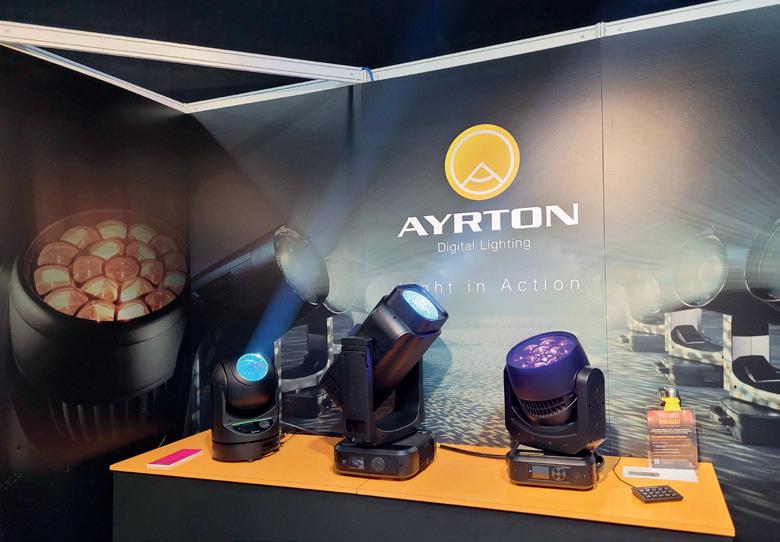
Vari-Lite and we thank them for their hospitality. Maybe next year we will see you in Leeds – it is well worth the trip!


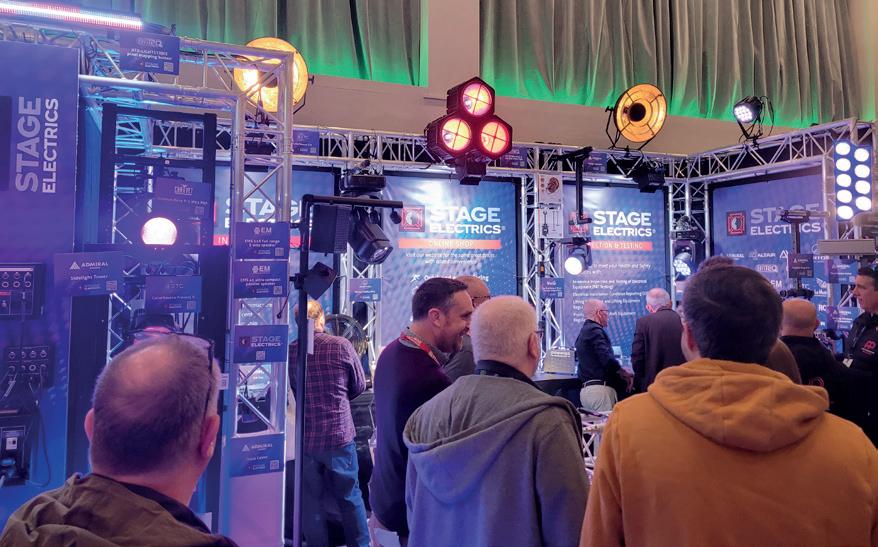



| Above:
Getting the most out of your LED array – other options: Part Two of two.
Written by Declan Randall

“Well, having all these colours available is great,” I hear your say, “but I spend most of my time just shifting between colour temperatures.”
There are different ways to achieve ‘tunable white’ fixtures – some make use of an RGBW (RGB, white) LED array, others are simply a combination of warm white (WW) and cool white (CW) emitters, and there are some that include a blue and amber in addition to the white emitters. One of the drawbacks of CW and WW LEDs is that they are phosphor-coated, broad-band emitters and they all use a high intensity blue (indigo) LED as the ‘pump’. This leads to a spike in the blue portion of the spectrum that can be hard to control.
The technical bit: Warm white and cool white LEDs use a tri-phosphor chemical composition to generate light, the large blue spike caused by the pump is still apparent – perhaps not the eye, but certainly on camera and to the way objects will render. Adding a filter to a WW or CW source will expose just how different the spectral range is.
“...I spend most of my time just shifting between colour temperatures.”

There are LED arrays which use mint as one of the emitter options. The mint is also a broadband emitter that contributes to a wide colour temperature range as well as being able to easily pull saturated cooler colours into more pastel tones.
The technical bit: Mint’s phosphorconverted broadband spectrum is really well suited to helping ‘tune’ whites to desired CCTs (Correlated Colour Temperatures) in the range of 1900 – 10000 K. When used in more complex colour arrays like ETC’s Daylight HDR is allows for more control over the subtleties of the colour mix verus a simpler array like RGBW or RGBM. A complex array allows for easier adjustment of the green/magenta shift, something which is particularly useful for camera work.
The arty bit: Using RGBW arrays will give you different results as your source is making use of the narrow-band RGB emitters – the only broad-band emitter is white. The cyan, blue and mint emitters are all broad-band phosphor coated so you can be assured of a fuller-spectrum light source at any colour temperature, without any strange spectral shifts as you move through the range. The addition of the deep red means it is possible to more closely emulate the warmth and depth of tungsten that has not previously been possible.
There is nothing wrong with fixtures that use differing combinations of emitters – the key lies in understanding how the resulting output may affect the colour rendering so that you can take the necessary steps to correct and adjust for these changes.
Colour temperature is a term that describes the ‘colour’ of a particular nominally white light source. Rather than using non-specific descriptors like warm, neutral or cool, colour temperature provides specific measurements, expressed in kelvin (K), to keep specifications, well… specific.
If you think of a steel rod in a furnace, as it heats up it starts to change colour, first red, then orange, to yellow, then white and then blue. This same principle is applied to colour temperature, except instead of a steel rod, we use a blackbody radiator. This is a ‘theoretical blackbody’’ – it would not be physically possible to heat an object to infinity, so the theoretical model plus the wonders of maths give us our standardised reference scale. As the blackbody is heating up, the electromagnetic energy it is radiating is directly linked to and changing with its temperature. The corresponding chromaticities are plotted on a graph forming the blackbody locus or Planckian curve. The kelvin scale is used as this is an absolute thermodynamic temperature scale.
So, why is colour temperature important? We experience changes in colour temperature throughout the day as the sun rises and falls. Similarly, different light sources are thought of to be ‘warm’ or ‘cool’

depending on their spectral content and how orange or blue they are.
No light source is a true colour temperature however. There are inherent deviations in the spectral content of different whites.
Enter CCT – Correlated Colour Temperature.

If a light source does not plot exactly on the blackbody curve, a perpendicular line is drawn from the source’s chromaticity coordinates through the blackbody curve. Where they intersect is the correlated colour temperature. In reality, the light emitted by many luminaires doesn’t plot directly on the blackbody. It plots a little above or below. Because that difference can be visually apparent, it is important to look at Duv values for any sources not plotting on the blackbody curve. Both sources could be 3500 K, but
one might be a slightly pinky warm white while the other might be a yellowy/greenish warm white. If used in isolation these differences may not matter, but this difference will become apparent when viewed together. A positive Duv indicates a shift towards yellow/green and a negative Duv indicates a shift towards magenta.
In this example, light from a 4100 K source with a positive Duv (when viewed by itself) will appear as neutral white.
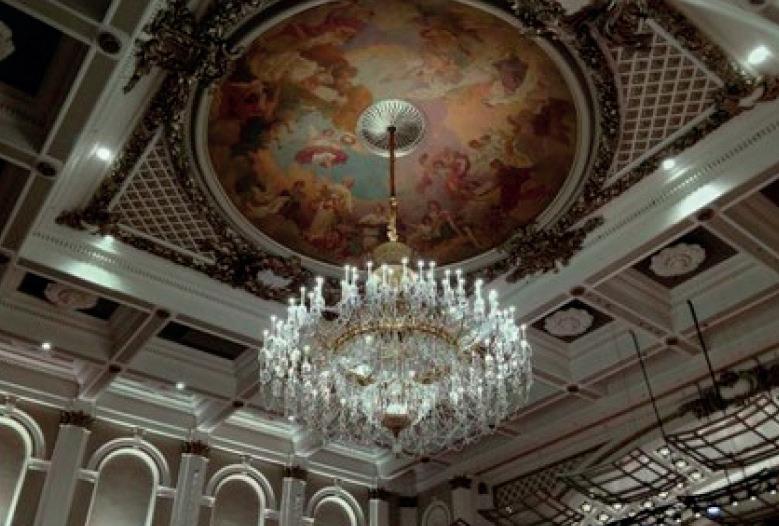
Repeat that with a 4100 K source with a negative Duv and it too will appear neutral white.


When viewed together however, the difference is apparent and may not be desirable.

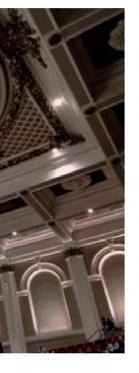
LED technology has changed the way we work and the way we need to think about light. Traditionally, we are used to starting with a fullspectrum light source (be it daylight or tungsten) and then we used filters to remove the portions of the spectrum we did not want. Moving lights made use of a subtractive CMY (cyan, magenta, yellow) colour mixing system. This process of adding filters to a white light source is familiar and comfortable – we’ve been doing it for years and have a good understanding of how it works. Additive colour mixing as a concept is not new to us either. When lighting cycloramas with flood battens, these were typically gelled in red, green, blue and either amber or white – but we were still essentially starting with a white source, filtering out portions of the spectrum and then using the remaining light in our additive mix.

LEDs are different. With an LED fixture, you are essentially starting with nothing and adding in the portions of the spectrum that you want, to arrive at the colour of your choosing. While this means you could be very precise in your colour mix, it does require that you add as many individual spectral components at your disposal as possible. The more of the spectrum you have available in your array the more spectral content there will be in your mixes and the more accurately the colours of the lit objects will render, both to the eye and to the camera.
The ability to mix your favourite colour is one thing. Being assured that the colour you have chosen remains consistent and repeatable can be an entirely different matter.
As an LED heats up, it becomes less efficient. A red emitter, for example, can lose up to 40% of its output as it heats up. This is a phenomenon known as “droop” (or “thermal droop”) and it is something that all LEDs are affected by. To make matters worse, not all LEDs droop to the same extent. This loss of efficiency and output can have a huge impact on your chosen colour, output and spectral composition and has the potential to be disastrous and could lead to your colours not looking as expected. You do not want to have to worry about the potential difference in colour after a full eight hours of shooting versus the colour when the fixture is turned on in your first cue. Selecting fixtures that offer a degree of “droop compensation” may be important to you, depending on your application.

Having luminaires with multiple emitters is hugely beneficial in terms of accurate colour rendering and digital spectrometry but ensuring that you have a means of control that enables all the benefits this system has to offer is equally as important, if not more so. If you only have two colours (plotted as points in an xy colour space), you can mix to any point in the colour space between those two points, but in a straight line only. When working in an RGB colour space, you can mix to any colour point within the triangle created between those three points, but there is only one possible combination of colours, or ‘recipe’ if you will, that will achieve that colour. The introduction of another emitter changes this. As soon as another colour is introduced, the number of possible ‘recipes’ increases – the more colours you add, the greater the number of recipes there are. These color recipes are known as “metamers” and each new metamer will have an impact on the way an object is rendered and therefore perceived by both the eye and the camera. The ability to fine-tune your colour at this granular level is a powerful tool and another of the aspects of LED lighting that I find so exciting.
The choice of metamer can radically alter the appearance of an object and a good understanding of metamer control is becoming essential in the world of LED lighting. In the example on the left, we show two metamers of R74. One metamer is offering the brightest version of that colour, the other a more spectrally accurate option. You may find that when you use a console’s filter picker the colour does not necessarily render as you were expecting. One of the reasons for this could be the chosen metamer. As the designer, you may choose a version of that colour that is the brightest option, or a metamer that is a closer spectral match to the filter selected. You may opt for a hybrid metamer that lies in between.


In the first examples above, the rendered result of using different metamers becomes apparent. In the first example, there are 6 different “white” metamers – to the eye on a white surface, all the whites look the same even though they were ‘constructed’ in different ways. On a coloured surface, the differences in metamer become more obvious.
Similarly, we get different results when mixing different metamers for a more saturated colour. In the second example above, we used Lee 021 as the reference point and created different metamers to achieve the same colour, but with different results.
Basically, what I am saying here is that spectral content matters! The laws of reflection apply here too. To see an object as having a specific colour, that colour must be present in the spectrum of the light source hitting it so that it can be reflected towards our eyes. The same is true for camera sensors – the more digital content is present in the spectrum, the more information the camera will be able to capture, the easier it will be for the colourist to balance light and colour in postproduction. That said, no two people see colour in the same way. Everyone’s perception of colour is slightly different, so there are no hard and fast rules. Similarly, camera sensors are different too – each manufacturer has their own unique
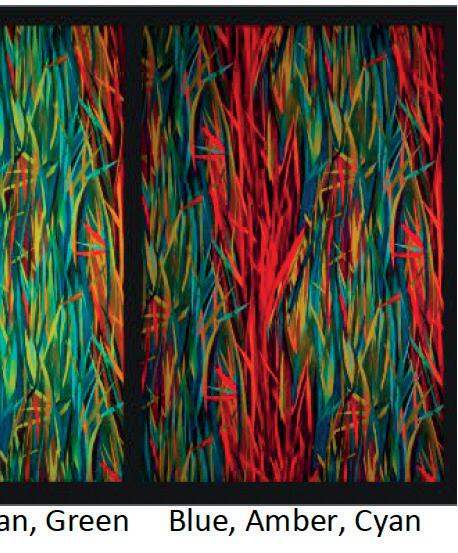

‘recipe’ they use for their sensors – and you choose cameras based on these differences to get specific results.



So, if spectral content matters and some emitters are only narrow-band, then why not only use broad-band emitters? Firstly, to have the power of metamer control, you need the differences in spectral content. If all emitters were broad-band, then there would be no saturation. It is also worth keeping in mind that the presence of a white emitter in an LED array does not increase the gamut of the fixture as the white point sits within the gamut created by the other emitters. The same can be said for the mint emitter. Their contribution to the array lies in saturation control as well as to the output of the fixture.
Throughout this article, we have referenced the CIE 1931 chromaticity diagrams. This was done for ease and because this is the diagram that is most familiar and is also often used when showing LED luminaire gamut. This diagram was updates in 1960 and again in 1976.
The CIE 1960 Chromaticity Diagram is technically the proper place to chart the blackbody curve.
The CIE 1976 Chromaticity Diagram was created to make a more uniform chart for plotting chromaticity. It uses u’, v’ coordinates and is scaled so
that distances in the diagram more closely align with perceived differences in colour appearance. The 1976 diagram is preferred for showing colour differences because the distance between points correlate more closely to the variations we perceive in colour.
To add yet another degree of complexity into the mix, LEDs do not simply fail when they reach end of life. Unlike a tungsten lamp, where the end of life is very apparent and definitive, LED’s simply keep getting dimmer until they reach the point where they no longer emit usable light. As manufacturers, this poses a problem in terms of how to rate the lifespan of a particular luminaire. To this end, there are two standards to measuring the life of an LED light source.
The first is L70. Essentially the standard means that when an LED reaches 70% of its initial light output, it is deemed to have reached ‘end of life’. So, if an LED is rated at 54,000 hours, does this mean the manufacturer has run the LED for this entire period? No! This would take too long and prevent fixtures from ever coming to market. To measure L70, an LED is run at its manufacturer-specified optimum ratings and its output is measured every 1,000 hours. This is repeated at least 6 times (6,000 hours is the minimum) and this data is then



extrapolated mathematically to calculate the L70 life span. It is worth noting that this standard tops out at 60,000 hours – so LEDs claiming a longer lifespan than this have not used the L70 standard. This standard is applicable to the LEDs (emitters) only.
The other standard for measuring LED lifespan is LM-84. This is a test that is applied to the complete luminaire – and not just the LEDs. Some manufacturers may overdrive their LEDs to get more output, which shortens their life. Perhaps the cooling system is not as efficient as it should be – this too would shorten their life. These practices would not be reflected in L70 testing, but would be tested under LM-84 as this tests the complete luminaire under normal operating conditions. The testing is
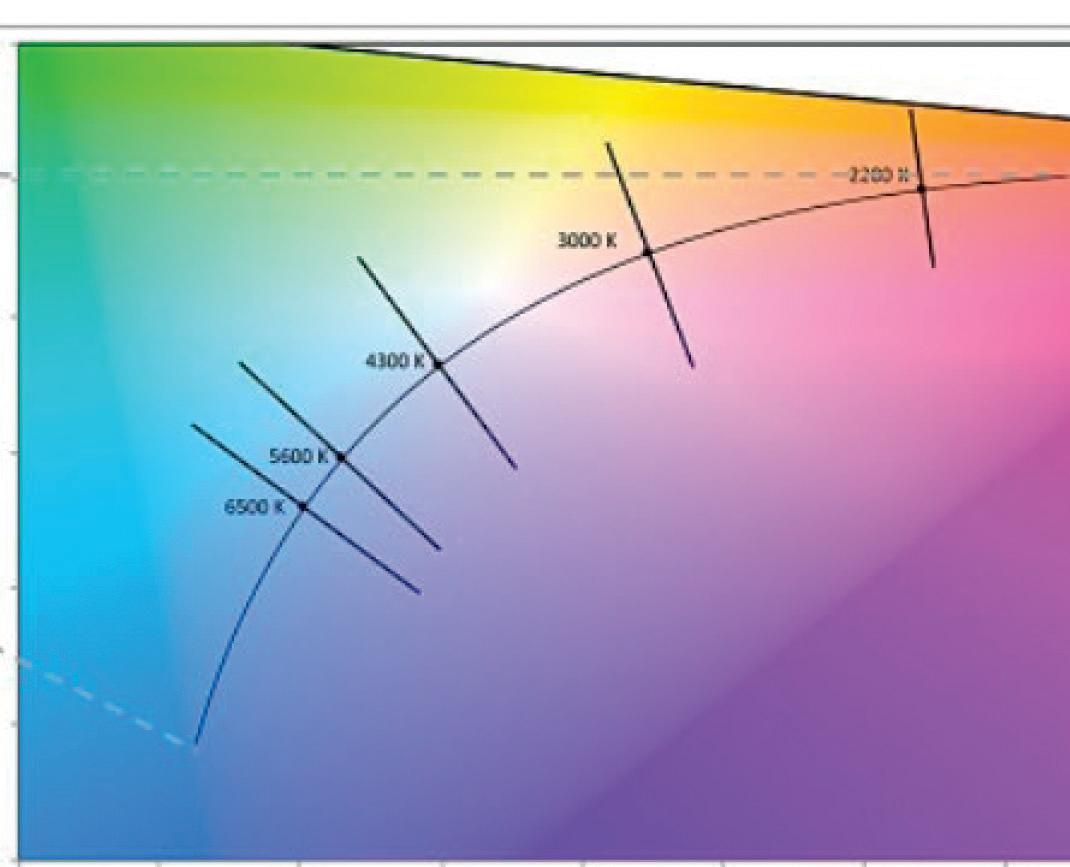

also done in sections of 1,000 hours and is repeated up to 6 times, with the light output being measured at the same 1,000 our intervals.
Given how LED is a relatively new technology, we have managed to come a long way in a relatively short time. Are they perfect? Of course not. Will they keep getting better? Without a doubt. But in the meantime, we all have to carry on with the business of lighting, whether it’s for stage, film, architecture of any other discipline. All we can do is be curious – never stop questioning, never stop experimenting and never stop discovering. The world of LED lighting is exciting and I for one, cannot wait to see what new developments lie in store.
At the time of writing, Deep Red LEDs are only available in the fos/4, Desire and Source Four LED Series 3 product ranges from ETC. Advanced metamer and colour controls are available when using these luminaires with any of the Eos



family of lighting consoles.
Additional article resources: fos/4 Panel
https://youtu.be/VTWd9qrpuW8 fos/4 Fresnel
https://youtu.be/Dx8VFHiIYGc fos/4 UI
https://youtu.be/hs0r60PfrH4
fos/4 Brochure
www.etcconnect.com/ WorkArea/DownloadAsset. aspx?id=10737503388
Source Four LED Series 3
https://youtu.be/OjdVerorbMs
Eos color controls
www.youtube.com/watch?v=X_ OqzmzSRLo&t=580s
ARG – Advanced Research Group at ETC https://youtu.be/ kKx545RPWNA
ARG are a team of specialists at ETC who conduct deep research into LED technology, colour science and lighting. It is through their research that many great ETC products have come to market and

have become industry standards and they are the reason why ETC is the world leader in understanding and implementing colour and colour control in the entertainment industry.
Declan was a freelance lighting, set and projection designer for 23 years before joining ETC as Training Program Coordinator in 2018. www.declanrandall.com
You can read the full article on our website: https://stld.org.uk/ articles/an-array-of-choice















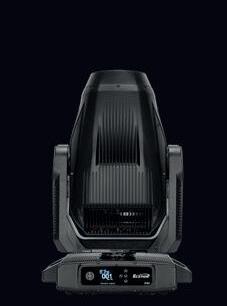















































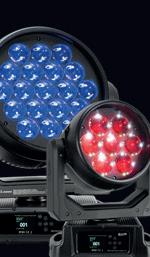







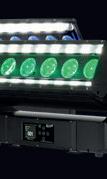

| Right: Piers Shepperd: Backup Chair
| Words: Bernie Davis

For some years now ‘Backup The Tech Charity’ has been the charity of choice for the STLD, after Light Relief was reborn and renamed. I was not only impressed by its support for the industry I have been a part of most of my working life, on the few occasions I came into contact with the charity giving support I was really impressed with how it prioritised the giving of help over any over-officious meanschecking. If you have problems then you need help now, and they knew that.
The change of name to Backup Tech reflected the intention to spread the charitable umbrella to cover anyone working behind the scenes in the entertainment business.
Jump forward a few years, and earlier this year Backup Tech contacted the STLD to ask for a recent logo to add to their website to recognise us as a supporter, and I decided that we should also have a page on our new STLD website
about the charity to include links to their website. I went to copy some of the wording and was surprised to see that people in our business were not explicitly supported by Backup Tech any longer. The description of those included said “…industry technical professionals, crew/production personnel and people working in the technical supply chain across the UK entertainment industry specifically live events, music touring and theatre…” which clearly did not include TV.
I investigated’ and it seems that Backup Tech had met a serious problem with claims and funding. The combination of Covid and the scriptwriters strike had left many freelance camera operators, particularly in the film business, out of work. Don’t misunderstand, Backup Tech are a compassionate charity and want to help anyone in difficulties, but the scale of these requests was in danger of bankrupting the charity. There is
Backup recently supported Neurodiversity Celebration Week and last year’s PLASA London saw us host a session on neurodiversity. There is very little data on the levels of neurodiversity in the arts industries and more work to be done to support inclusivity, but anecdotally there are a high number of professionals who are neurodiverse working as technicians. We’re constantly learning more and recognise the extraordinary contribution of neurodiverse technicians, celebrating the strengths and talents of our industry’s neurodivergent community and finding ways to encourage the industry to create a safe, welcoming environment where their unique abilities are nurtured, not stifled or taken advantage of.
The Backup Podcast is an excellent opportunity to take a deeper dive into these topics and more. During each episode, we talk to industry leaders to discover something new about their work. In one of the latest episodes, I talk about how the charity has evolved as it supports technicians with grants, talking therapy, online resources, training courses and workshops. It’s a great way to find out more from people making a real change in our industry. If you would like to make a change, why not look at becoming a mental health first aider? The training is free via our AJ Bursary. You could also get involved with one of our campaigns.
Find out more via the website: www.backuptech.uk

another charity that supports those who work in Film and TV The Film + TV Charity https://filmtvcharity org.uk and Backup Tech were able to pass many of these requests over to them. Backup Tech reviewed the situation and as they had no donors from the TV sector they decided to focus their support to Live Event, Touring, and Theatre, which then left their support for TV lighting crew out of our charity of choice.
I had a long talk with Piers Shepperd, chair of Backup Tech, explaining that many of our crew worked on live events and theatre as well as TV and we were in danger of having people working alongside each other doing the same thing, yet only some were supported by Backup Tech. After some discussion they agreed to extend the definition of their umbrella of support includes Broadcast TV, neatly separating out the much larger catchment of the film industry. In return for
this they hope we can encourage some of the broadcast-orientated companies to support Backup Tech.
I am pleased that Backup Tech were receptive to my views and it goes without saying that they will remain the STLD’s charity of choice – we hope it will remain one of yours too. I would also like to say that in all these discussions Backup Tech were at pains to point out that they were not in the business of turning anyone away just because of where they work.
It is worth noting that they now offer Wellbeing support in the form of helping to support and share industry initiatives that help improve awareness, provide training and foster more open communication about Mental Health and Addiction/Recovery. The job we do can be highly stressful, and although that can be part of the appeal it can also take its toll. Their ‘Are you Ok?’ campaign works with


industry suppliers to provide easily accessible signposting for mental health services. Highly visible posters in bathrooms and crew rooms, or QR code stickers on flight cases are intended to catch the eye of anyone who may need urgent or non-urgent assistance and highlight an easy way to find it.
If anyone wants help or advice Backup Tech run a 24/7 Wellbeing Helpline on 0800 464 7068
https://stld.org.uk/supportfinancial-aid



| Words by Ian Rae
April 30th 1936 to 3rd May 2024
Robin didn’t have the easiest start to his early life, being hospitalized from the age of 11 for 4 years which left him short changed on his school days. He made up for this with night school which also taught him technical drawing and welding, skills he went on to use in his Dad’s Theatre equipment design company, Rae Stage.
I think it’s fair to say that Robin was a chip off the old block and learnt a great deal from Tom Rae, his father, who was much the inventor of his time. Tom Rae was a very early designer of the retractable audience seating systems and an influencing designer of early TV studio lighting suspension systems.
Robin worked for Mole Richardson during the late 60’s and into the early 70’s in Thetford, Norfolk, alongside his brother Colin, They started a new company in Diss in 1973 manufacturing television lighting suspension and theatre rigging systems just in time for the three day week implemented by Edward Heath’s government at the time.
The Company they started was called Tele-Stage Associates which is so named because at the time they started they couldn’t afford enough employees to run the business. They relied on the goodwill of friends, associated designers, accountants, wives and grandparents to make the business stay alive through the early difficulties of starting a business back then.
Tele-Stage associates was one of the most successful television engineering companies of its era and is remembered worldwide to this day. Tele-Stage Associates broke significant ground with Robin at the helm travelling the world designing television and theatre engineering solutions for Businesses, Governments and Schools too. Robin had the ability to turn up to a pre build design meeting
anywhere in the world and quickly understand what the customer required, then, within 2 days, design a detailed set of beautifully drawn isometric drawings for the meeting committees with fully costed budget all produced solely by him working from his hotel room. This was a regular occurrence and an amazing process to witness first hand, including the disbelief on the committees faces when they saw the detail and completeness of the information turned out in just a couple of days.
Design visualisation and determination are the key attributes that Robin showed countless times in his career and home life too. He is best known for the self-climbing lighting hoist which was completely his concept and was designed and patented by Tele-Stage Associates in the 70’s. The hoist was a simple concept of a single sheet metal chassis folded into a U shape with a bespoke drivetrain, a gearbox machined with 4 suspension cable pile winding drum assembly, coupled with an electric motor. The drivetrain assembly was bolted inside the U shaped chassis leaving the four suspension cables to exit the top of the chassis, one in each corner for stability. The real gem of this idea was that the hoists could be rolled in on a pallet, the suspension cables reeled out and hooked onto ceiling bolts and then the hoist could be powered into position from the floor without enduring any heavy lifting and awkward fixing at ceiling height. Maintenance was also super easy too. Unfortunately, the patent for the self-climbing hoist was never maintained when Tele-Stage Associates was bought by Rank Group in the 1980’s. We now see the self-climbing hoist being freely made by many companies across the world but back in the 70’s and early 80’s this hoist was exclusively available from Robin and his team. Maybe there is an irony in the freedom in his design now, in that his hoist design has becoming an everlasting memorial to Robin in TV studio’s worldwide, it’s certainly a

lovely thought that his spirit lives on in the places he worked so hard to help build.
Robin had many more great designs and also supported new designers during his working career with some sensational pioneering projects like the rock band ELO’s touring flying saucer stage designs. Also concept introduction like the early powered stage rigging systems tested at the Royal Opera house. These designs seeded the emergence of many UK based stage rigging designers of excellence which went on to build technology into the West End Theatre performing arts and touring performers making the UK one of the best rigging designers of equipment in the world.
Robin retired to the channel island of Alderney in 2002 with his wife Myrtle who was always his cornerstone throughout his life and they enjoyed their retirement there until the very last days for them both.
Robin is survived by three children and seven grandchildren. Family holidays on Alderney have left a fund of happy memories. A mention should be made of Robins’ love of cricket. A very competent Umpire, with an encyclopedia of cricket knowledge. It was always a pleasure to hear Robins’ thoughts on any aspect of the game.
Robin was a very hard working family man and non-egotistical designer of extraordinary excellence, with practicality and value for money at the core of everything he ever worked on. Robin has been missed by the TV and Theatre industry since 2002 and will be missed by his close work colleagues, friends and family, rest in peace Robin.
LSI are deeply saddened to announce the passing of Richard Bunting, their esteemed UK Business Development Manager. He will be deeply missed by all who had the privilege of working with him. Richard kicked off his professional career at Theatre Projects in London and in 1986, joined Rank Strand as a product specialist.
Strand at that time were the world’s biggest stage lighting manufacturer and distributor. This is where Russell and Brenda Dunsire first met Richard – working alongside each other until in 1991, Russell and Brenda left Strand and formed LSI.
As their new company grew, Richard joined the LSI family in a newly created position as Operations Manager.
Russell Dunsire, LSI Chairman recalls; “His encyclopaedic knowledge of products, supply chain and the industry Who-is-who meant Richard quickly became a master at getting products sourced and delivered. Skilfully out-manoeuvring both competitors and their suppliers on price and lead-time. And always with that signature charm and politeness.”
As Richard transitioned to the role of Business Development Manager, he continued to cultivate and maintain relationships with suppliers and clients but also now quantity surveyors, contractors, designers and consultants. A challenge he relished.
Managing Director Brenda Dunsire remembers Richards love of industry get-togethers; “Richard loved attending all the various
“His legacy will continue to inspire us as we move forward, committing ourselves to uphold the high standards both in character and professionalism that Richard set.”

trade shows and events, his LSI shirt always immaculately pressed. Whether it was with the Theatres Trust, ABTT, MPS. IBC, the STLD... always on the lookout for new and exciting products to play with. But mostly it was because these events were his chance to meet all his favourite people, in the industry, in one place. Like a Disneyland - but just for his people.”
In the last few years, in no-small part due to both his industry expertise and the well-earned respect of his peers, he proudly served on the judging panel for the PLASA Innovative New Product of the Year award.
He loved this opportunity so much. Richard wasn’t just ‘in the industry’ he was an actual ‘part of the industr’ and to him - this was his
opportunity to give something back. An opportunity that he absolutely cherished.
He was a true credit to the LSI team and the industry in which we belong and he will be sorely, sorely missed.
Brenda Dunsire concludes: “His legacy will continue to inspire us as we move forward, committing ourselves to uphold the high standards both in character and professionalism that Richard set.”
Bernie Davis adds, “Our thoughts and deepest condolences go out to Richard’s family and loved ones during this difficult time.”
Rest in peace, Richard. Your contributions will never be forgotten.

The Milton Rooms Unveils State-of-the-Art Sound System
The Milton Rooms, in Malton, has become a small-town venue with a world class sound system, after completing its most recent phase of regeneration.
A.C. Entertainment Technologies Ltd, in collaboration with installers North Star Engineers, were entrusted with designing a new PA system after an independent assessment concluded the venue needed expert advice to overcome its poor acoustics.
AC-ET calculated the best options for the new sound system using NEXO’s NS-1 acoustic prediction software, which enables users to configure their speaker placement in any venue setup, and then predict the optimal sound coverage for the audience.
To deliver the optimal audio for the space, a NEXO GEO M10 line array system with NEXO P10 speakers used as delays, and DAD stage monitors all controlled by an Allen & Heath Avantis console were installed. Numerous NEXO ID speakers were also deployed as front fills and to feed audio into the venue’s side bar and foyer.
A truss grid above the main hall floor using Sixty82 M29, Columbus McKinnon D8+ Lodestar hoists with Tourflex Cabling, Out Board LV6 motor controller and Broadweigh 4.75t wireless shackles completed the installation.
Oliver Stables of The Milton Rooms said,”The new audio setup has been a huge success and has made such a difference to the quality of the sound produced for our audiences.
“Every band and artist who has performed at our venue has commented that the standard of this equipment rates with the big arenas they have performed in across the country. High praise indeed.”
AC-ET’s Steve Eaton who planned the audio system said, “Following the initial site visit it was apparent that the NEXO GEO M10 system would be a perfect solution for the venue. This was confirmed by NEXO’s NS-1 software and The Milton Rooms now has a very enviable sound system.”
Ireland - A.C. Entertainment Technologies Ireland Ltd. are delighted to welcome Manni Loosli as their new Business Development Manager. Based in Cork, Manni is an established lighting designer and technician with over twenty years of experience. His background as a Lighting Director, Technical Manager and Project Manager makes him ideally placed to offer the best advice and support to our diverse range of clients.
AC-ET Ireland supply Chroma-Q®, ProLights, Avolites, Luminex, Green Hippo and Tourflex® Cabling, as well as many other leading industry brands. AC-ET’s Export Director, Lance Bromhead commented, “I’m delighted that Manni will be joining A.C. Entertainment Technologies Ireland. With his extensive local experience and contacts, he is well equipped to support our clients

and make sure they get the best products at the best prices.”
Manni stated, “I feel honoured to be joining A.C. Entertainment Technologies Ireland and I’m really looking forward to showing their amazing range of brands to the Irish market.
“It’s a fantastic opportunity for me to utilise the knowledge and professional experience I’ve gained from previous roles and apply this to helping our clients find the right products and solutions for them.
“I can’t wait to get out to see our customers, and to help A.C. Ireland continue to grow into the future.”

ARRI announces the Hi-5 SX, a single-axis wireless hand unit with flexible upgrade options
ARRI introduces the single-axis Hi-5 SX hand unit, joining the three-axis Hi-5 at the forefront of wireless camera and lens control technology. Ready to perform a variety of single-axis tasks on set, the Hi-5 SX can also be easily upgraded to higher functionality via optional software licenses. Weatherproof and exceptionally hard-wearing, it brings ARRI dependability to the control of almost any lens on any camera, at an attractive price point.
Sharing the Hi-5 form factor, the Hi-5 SX has a wellproven ergonomic design that makes it comfortable to hold and operate. The large display is easy to read, and the intuitive touchscreen interface is based on a camera GUI. Uniquely, ARRI offers swappable radio modules for the Hi-5 and Hi-5 SX, allowing crews to choose the most suitable module for any shooting location or to conform to different regional frequency regulations.
Upgradeability is at the core of the Hi-5 SX concept. Compatible with all existing Hi-5 licenses, such as the Cinefade, RED camera control, and Focusbug licenses, the unit can also be upgraded with two new software licenses that give users the freedom and flexibility to access the functions they need, when they need them
Firstly, the Hi-5 SX Plus License enables lens mapping, Custom Smart Ring creation, six additional user buttons, tail slate mode, and more. Secondly, the Hi-5 SX All-Axis License enables simultaneous use of the knob, slider, and force-pad for three-axis lens control, as well as complete

display information, AUX axis, and full virtual T-stop and focal length features. Once both licenses are installed the Hi-5 SX becomes functionally indistinguishable from the Hi-5; the blue SX joystick toggle can even be swapped for black. Users of the Hi-5 SX with no additional licenses installed can choose between the knob, slider, or force-pad to control a single lens axis, whether focus, iris, or zoom.
The Hi-5 SX allows 1st ACs to limit their initial investment in a hand unit and a single lens motor, while still giving them the peace of mind of pulling focus with the most sophisticated single-axis unit on the market, backed by the universally trusted ARRI brand. As their careers progress, they may choose to upgrade their Hi-5 SX, offering productions more functionality and increasing their earning potential.
For well-established 1st ACs who already own a threeaxis hand unit and several lens motors, the Hi-5 SX lets them facilitate separate iris pulls operated by the cinematographer or DIT, using the most up-to-date technology. While for rental companies that have multiple hand units, the Hi-5 SX provides a cost-neutral way to sell off older three-axis units that are often sent out for single-axis tasks and replace them with brandnew, state-of-the-art units.
With a ruggedized housing that is sealed, dustproof, and weatherproof, the Hi-5 SX can be operated with complete reliability in harsh environmental conditions. ARRI-branded batteries based on the NP-L interface can be hot-swapped without powering the unit down, and their remaining capacity is indicated accurately on the display screen.
The new Hi-5 SX will be available to order from July 1, 2024, and will begin shipping on October 1, 2024. It replaces the ARRI SXU-1 single-axis hand unit, which will be phased out.

Ayrton appoints Briony Berning as Design, Training and Business Development Engineer
Ayrton is delighted to announce the appointment of Briony Berning as its new Design, Training and Business Development Engineer as part of the continuing expansion of its international team. The appointment
takes place with immediate effect.
Berning’s multi-faceted role will be to formalise Ayrton’s product training on fixtures, key technologies and developments to the markets and its global network of distributors. Alongside this she will develop the theatre markets on a global scale, paying close attention to the specific needs of these sectors and the relevance of Ayrton products within them. Finally, she will maintain a close relationship with her specialism, the theatre market, to keep abreast of developing trends and technologies and ensure Ayrton product development continues to answer these needs.
UK-born yet spending her formative years in France, Berning is fluent in French and has spent her entire professional working life in the performance lighting sector, specifically theatre lighting. She returned to the UK to study at the University of Glasgow, becoming the first technical apprentice at the National Theatre of Scotland in 2009 before moving to Scottish Opera, and then to the National Theatre for nearly a decade.
“I am so excited to be joining the Ayrton team in this role,” says Berning, who previously held the position of Key Account Manager at Ambersphere Solutions, Ayrton’s exclusive UK distributor, for 4 years. “During my time at Ambersphere I felt myself becoming more and






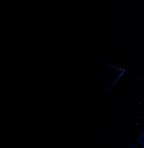









































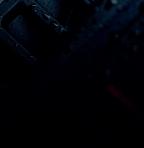





























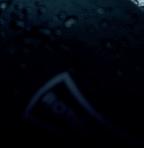















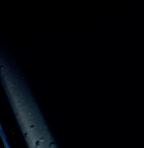































more curious about the technical details and creative ecosystem of product development. I discovered this aspect was now closest to my heart, which in turn determined my move to Ayrton. I feel this role is perfect for me and I can’t wait to get started.”
“We are excited to welcome Briony to this new role at Ayrton”, comments Michael Althaus, Global Sales Director at Ayrton. “Growth comes with many challenges and with Briony we found the perfect asset with a wealth of experience in theatre, training and engineering. So glad we can continue to strengthen our growing family with talent and passion.”
| Above:
Ayrton 0016 4KL
1st Selection 2nd
Half Final ESC
MALMO 2024
Photo: Ralph Larman
A1C3777
Switzerland sml
Fredrik Stormby goes large with Ayrton fixtures at Eurovision Song Contest 2024
The Eurovision Song Contest’s official slogan #UnitedByMusic is applicable not only to the artists and audiences. To stage a live broadcast of this magnitude –reputedly the largest live broadcast in the world – takes huge teamwork and cooperation over a long period of time, even before the artists appear on stage.
Behind the scenes is no exception and under the experienced hand of veteran Eurovision technical show director, Ola Melzig, the production designer, Florian Wieder, and lighting and screen content designer Fredrik Stormby of Green Wall Designs, worked closely with associate lighting designers Mike Smith and Michael Straun to ensure the 68th Eurovision Song Contest 2024 in the Malmö Arena was the most impressive to date.
“As this was the 3rd time Sweden had hosted the Eurovision Song Contest in ten years, we set ourselves the challenge of doing something new and brave that would respectfully challenge the traditional Eurovision concept a little, and introduce a more large-scale concert tour feel to the familiar ‘studio show’ concept,” explains Stormby.
Taking inspiration from Swedish music, songwriting and local architecture, and a tricky request from the producers to put the audience in shot for every performance, the duo developed a stage without any traditional scenic elements or shapes, based on in-the-round layout and using light and video to shape the stage. Overhead a highly dynamic rig on almost 200 automation hoists










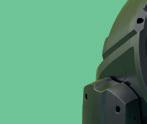


































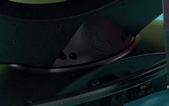






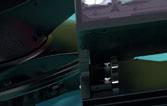





























































































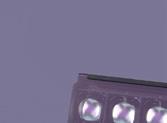




































































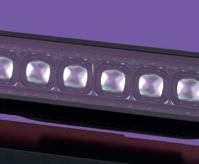













































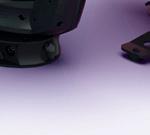






















carried over 200 tons of equipment. “Most of the lighting design was to work with strong lines of fixtures – not many types – but densely used to give very strong expressions,” explains Stormby. “We could then use many combinations of these individually strong lines of lights and the many automated rig positions to create a very interesting palette.”
Key to Stormby’s exclusively LED and laser-based design were 384 new Ayrton Rivale Profiles and 146 newlyreleased Kyalami fixtures, along with 32 Huracán Wash, supplied by Creative Technology Group.
“I like to approach my television designs using dedicated keylight fixtures that have a certain quality of light to function well as key lights,” says Stormby. “I also like a single type of workhorse fixture throughout the rig that I can use for beam effects, mid-air effects, and to frame in on props or dancers, but can also support the key lighting to fill in as back or side lights. And that became the job of Rivale.”
Twenty automated ‘pods’ each carrying Rivale Profiles in a 3x3 configuration formed the main feature of the lighting design and allowed for a near-infinite number of aesthetic and practical positions. More Rivale Profiles were rigged in the audience trusses, above the stage and around the bleachers. “I was looking for a workhorse LED fixture with shutters and good colours that was affordable in large numbers. I also wanted good light quality, a narrow zoom, gobos, shaper blades and all the traditional stuff,” says Stormby. “We also needed to be careful of weight as there was so much hanging above the stage. I saw Rivale in Paris when it had just come out of development. It checked all those boxes and came in a compact, light-weight package which was perfect for what we wanted to achieve with this moving lighting rig.”
Thirty-two Huracán Washes were rigged on front of house and audience trusses: “I wanted a wash instrument with shutters that I could use for audience lighting but be able to shutter off the bleacher sections to avoid spill. I thought the Huracán Wash was a good pick because I had this idea that I might use soft gobos – which I didn’t in the end – but it was one of the features that attracted me. It turned out to be a nice big powerful, traditional wash light with some extra features which was exactly what I was looking for.”
Looking for a fixture to outline the stage design in all dimensions, Stormby chose Ayrton’s newly-released laser-sourced Kyalami. These he mounted on Wahlberg lifts around the stage edges where they could be raised and lowered to define the shape of the stage as required. More Kyalami were rigged in a long vertical line in each of the two 18m high towers that flanked the main video screen. Yet more were rigged in “the biggest truss in the world!” – a 32m long truss using 62 universes alone which hung in front of the main video screen, completing a ‘football goal’ effect with the side towers.
“The Kyalami on the truss and the towers could form a box of light for framing the back screen. We could also lower the massive truss right down to stage level so the Kyalami could act as a floor package or raise it really high to open out into very wide effects, and so many different ways in between,” says Stormby.
“Kyalami was nearing the end of its development when

| Above: Briony Berning
I was shown it, but we could see it was a compact unit with a good strong beam which we made good use of punching through all that video! I really liked the speed of Kyalami’s optical effects. That is what that fixture is about: it’s small and quick, and the prism and frost can be brought in and out really quickly – you can create a lot of different effects with that.”
The result was a design with enough flexibility to create unique looks for each of the 37 participating countries’ very diverse performances, with less than a minute turnaround time between each song.
“It was great fun working with this rig because we could position it in so many different places that, as well as giving us all manner of side light, backlight and low lights, we could really play with the lighting and directions of lighting as well. The openness of the 360° stage allowed us to invite the audience into the shots in a very natural way as part of the background. This is when we had to rely on the skills of our programmers! If we were shooting from one side of the stage, for example, we had to clean out all of the lights hitting the bleachers on the other side to make it look good. So we really produced the show shot by shot to achieve the big clean cool rock concert looks, yet were able to instantly cut to the hosts and back into Eurovision mode again. Eurovision is a crossover between television, theatre and show lighting and I think we succeeded in making the performances look like a big arena show.
“I was really happy with the overall outcome. It was 10 weeks of bonkers production but I’m proud of the result and we certainly ticked all the boxes in ‘respectfully challenging the concept.’ I like the fact that Rivale and Kyalami especially are such small fixtures but we can still pull off a show of this scale with them. That’s quite cool.”
#UnitedByMusic goes beyond the artists and creatives, and it took great collaborative teamwork between suppliers and distributors to bring this huge amount of equipment together for Eurovision 2024, led by Eurovision’s official lighting supplier, Creative Technology, and Ayrton.
Creative Technology Group made a substantial investment in 276 Rivale Profiles and worked closely with VIGSØ Denmark to sub-hire the remainder of the huge inventory of Ayrton fixtures. The fixture selection process was supported by TopStage of Sweden who worked closely with the lighting designers to introduce, demonstrate and facilitate their choice of the new Ayrton fixtures.
Emil Højmark, CT Group’s Head of Lighting for Sweden comments: “We’d been looking into investing in Rivale long before Eurovision came along, but Eurovision sealed the deal! Eurovision has always pushed the technology and Ayrton, which has had a long involvement with Eurovision, has always pushed the envelope in product development.
“We had over 384 Rivale Profiles on site and very few issues – it’s proved a really stable platform. The Huracan Washes were similarly reliable and one of the few fixtures we had no problems with at all. Eurovision is a high tempo project with unique challenges, and having direct access to the Ayrton tech team on site made such a difference. They are so passionate and dedicated,
delivering outstanding communication and support.”
Ayrton joined forces with VIGSØ to ensure everything was delivered and prepped in under 48 hours. “It was very impressive,” concludes Højmark. “VIGSØ did what I’ve never seen before from a distributor to pull this together. All departments worked really well together. It was hard work but good fun and all done in good Eurovision spirit.”
“The collaboration with Creative Technology was great, and it was exciting to be involved in the decisionmaking process from the start,” says Linnea Ljungmark of TopStage, Ayrton’s exclusive distributor for Sweden. “When Fredrik came to me early in the process to discuss lights for Eurovision, it was clear to me that he was looking for a very unique look - not a specific brand - with what the fixtures could achieve. Ayrton was able to provide this and it’s been really great to follow him through the process from initial idea to final design.”
Kenneth Jakobsen, Head of Sales at VIGSØ Sales, Ayrton’s exclusive distributor for Denmark, says, “VIGSØ was very happy to work with CT on this mammoth production. Everyone involved put in a huge team effort under challenging circumstances to collectively deliver the entire, massive project on time.”
“I think CT carried out an excellent delivery,” says Stormby. “With a rig designed like this with everything in straight lines, it really comes down to the finish of the build to make it look good and they really pulled that off. I’m really happy with CT and I’m really happy with the support from Ayrton.”
“It took an amazing collaborative effort to gather so many products in one place and make sure all was running smoothly and on time,” says Michael Althaus, Ayrton’s Global Sales Director. “Special thanks to Emil Højmark who coordinated the operation, to CT for its huge investment in Ayrton, and to Kenneth Jakobsen, Christian Vigsø and Linnea Ljungmark and their teams for all their hard work. It couldn’t have been done without them all, and thank you especially to Fredrik and the team for making everything look stunning!”
Photos: Credited to © Ralph Larmann
Caption: Stormby used Ayrton Rivale Profile, Kyalami and Huracán Wash to stunning effect on numbers like this, the winning entry from Switzerland, Nemo – The Code.
Ayrton launches Nando 502 Wash
Ayrton has launched the Nando 502 Wash, the latest in Ayrton’s Multi Sources IP65 6 Series and a brilliant evolution of the successful NandoBeam range.
Nando 502 Wash is an incredibly compact IP65 luminaire, specially designed for mixed use stage lighting, both indoors and outdoors, and even in salty environments.
In the wash light category there are some luminaires that will make the audience feel pure emotion, and the new Nando 502 Wash delivers a wash effect with finesse.
Perfectly suited to stage lighting, this new LED source offers the advantage of better integration into the colour space and facilitates colour reproduction. Nando 502 Wash is fitted with 12 high-performance 40W

LED sources with RGB-L additive colour synthesis and a proprietary optical system made up of a unique 210mm cluster in PMMA. This works in combination with 12 glass light-guides with an output surface made of an optical micro-structure.
Nando 502 Wash is a precision machine that allows perfect colour reproducibility with a colour rendering index greater than 86. It can achieve a luminous flux of 10,000 lumens and offer a perfectly homogeneous mix of pastel or saturated colours. A complete library of preprogrammed colours allows subtle, dense and contrasted swaths of colour. Ayrton has installed separate LED source control channels on all Wash versions and included a virtually infinite library of effects.
Versatile by nature, it can instantly switch from beam to wash with an excellent zoom ratio of 15:1 and a zoom range of 3.5° to 53°. Its black honeycomb and perfect separation of the light sources help to significantly boost the level of contrast. The anti-reflective treated glass window guarantees an optimal visual result and increased performance.
As lightweight as it is efficient, Nando 502 Wash’s new minimalist design ensures full accessibility to all functions. By decreasing the thickness of the aluminium parts, optimising the cooling system, simplifying lens guidance, and integrating low-density optical components, Ayrton has been able to reduce overall weight by 20%. A new submersible ventilation system in a non-waterproof compartment allows for optimal cooling.
Nando 502 Wash is an ultra-compact luminairemeasuring 342 x 467 x 268 mm (l x h x d) and weighing 15.6kg - that enhances scenes with elegance and refinement. It is meant for designers looking for depth of colour who want to create unforgettable wash effects.


dedolight Eflect: new sizes and surfaces
dedolight Eflect is providing tools which haven’t existed before. Two new surfaces have been released: Tropical Orange and Tropical Blue.
Tropical Orange generate blues, greens and aqua and you can increase the green by minimizing the angle of reflector to light, or you can increase the blues by increasing the angle.
Tropical Blue reflects auburn reds, yellows and gold and is unique in the results which can be achieved. Cosmic looking results are possible.
dedolight Eflect are bendable, warpable, multi-mirror reflectors available in various sizes. The large size is 18 x 18 inches, the small size is 8 by 8 inches, with one even smaller 7x10 cm Eflect reflector available.
New to market is Eflect XL – Eflect XL is 31 x 31 inches and is available in silver and gold – and the new colors: Tropical Blue and Tropical Orange.
Eflect can be used as a background generator or to reflect patterns onto subject and background.
Eflect is part of the dedolight Lightstream system - the most complete system in reflective light.
dedolight Lightstream, including dedolight Eflect, is enhanced and supported by the magic dedolight parallel beam intensifiers - available for 50 focusing dedolights; these are used in combination with a range of reflectors specific to dedolight Lightstream.
It is difficult to describe dedolight Eflect and the results of the new surfaces. View the movie in the link below for an overview of the dedolight Eflect – here we see dedolight Eflect being used practically and the myriad of results which can be achieved.
https://tinyurl.com/4hu8bvv5
Fiilex Q3 COLOR CINEMATIC FULL-COLOR LED FRESNEL LIGHT




Same compact, IP rated form factor as our popular P3 but with Lumen Radio, optics optimized for Fresnels, and our new 18+ stop dimming engine. The new Q3 COLOR is a cinema-grade 90W full-color Fresnel that packs a ton of features into its compact four pound housing. Almost a point source, this LED is capable of producing crisp shadows and clean barndoor cuts. Its IP-X5 rating and flexible mounting options also means it can be used and rigged in harsh and dynamic environments. No other portable LED fixture can match the Q3’s combination of power, size, and control.














chariot races to the Wild West. The show also pushed the technical standards of live entertainment with an impressive three-dimensional, 200-square-meter LED screen, approximately 300 projectors and a unique kinetic lighting installation.
Lighting Designer Tim Routledge and Lighting Programmer James Scott focused on crafting a visually stunning and immersive environment that elevated the performances with innovative lighting design and accounted for the 180º audience configuration surrounding the ice rink.







The world’s first telescoping grid pipe. From the mind of inventor Aaron Hammel (Local 80, motorcycle race mechanic/crew chief, owner of Patriot Camera) comes the no-cutting, better, rail-style, telescoping grid-pipe alternative to imprecise and bulky pipe organs: Grip Rail.

Claypaky Volero Wave and Scenius Profiles Go Rinkside for Holiday On Ice ‘No Limits’ Tour
Marking the 80th anniversary tour of Holiday On Ice, the 2023-24 ‘No Limits Tour’ was created by AED Studios in Lint, Belgium and played 174 performances in 21 cities across Germany with Claypaky Volero Wave and Scenius Profiles, from tour lighting provider Rentall Europe, lighting the figure skating spectacular.
“No Limits” and its 40 skaters and artists spanned many imaginative settings, from monster battles to Roman
“The tour’s design seamlessly integrated dynamic lighting with the fluid movements of the skaters, transforming the venue into a captivating spectacle of vibrant colors, intricate patterns, and synchronized lighting effects that enhanced the choreography on the ice,” says Lighting Desk Operator Kieran Carlin.
The base of the lighting design was a main grid with 225 kinetic fixtures suspended over the ice, two side trusses running the full length of the ice, a front truss, and four trusses around the main grid to highlight the ice. The stage was constructed with a massive LED screen and the design meticulously adapted to allow video effects to interact with the kinetic lighting creating an illusion of depth and enhancing the overall visual impact. A cube configuration reflecting the stage design provided a cohesive visual experience from all angles.
Sixty-eight Claypaky Scenius Profiles were chosen for their versatility and ability to serve multiple functions, including ice wash, key lighting, gobo projections, straight beam effects and delivering vibrant colors. Special gobos were added for specific visual effects in the show, such as a giant chessboard. The shapers were extensively used to cut through the ice, create specials and support the overall visual effects.
Additionally, 16 Claypaky Volero Wave were positioned in four groups in a square around the main grid over the ice. This setup allowed the Voleros to create effects on both the ice and the audience surrounding the rink. The

fixtures showcased impressive technical capabilities, including fast movement, dynamic and fluid transitions between lighting effects, and the ability to project a vast array of visual elements, from large, sweeping lines to intricate patterns composed of numerous small dots.
“Throughout the tour, the Claypaky Scenius Profile and Volero fixtures provided consistent and versatile lighting effects that enhanced each performance,” notes Carlin. “The Volero fixtures, in particular, were positioned very close to pyro effects and proved to be highly reliable, experiencing no significant issues over six months with only basic maintenance. This reliability ensured seamless execution and contributed to the overall success of the show.”
Carlin reports that Rentall Europe provided comprehensive technical assistance and collaborated closely with the production crew to ensure the optimal setup and performance of the Scenius Profile and Volero fixtures. “It was also very nice to have Claypaky Community Management behind us, offering further support and resources throughout the tour,” he says.
Rhapsodya by ClaypakyLow-noise multi-spectral RGBAL LED fixture
Claypaky Rhapsodya emerges as a groundbreaking, low-noise multi-spectral RGBAL LED fixture meticulously designed for various applications such as touring, live events, theatre, and TV production, and managed by a specially crafted, internally developed firmware algorithm.
It is an evolution of Sinfonya, particularly regarding the focus on quality of optics and color management, and the whisper-quiet operation even at full output. Rhapsodya has a stunning new product design that is
| Above: Claypaky
Eurovision 2024
sleek and modern, with a double power output (24,000 lm) compared to Sinfonya.
Rhapsodya’s cutting-edge technology introduces new features that promise to reshape your lighting experience, whether you’re on stage or in the studio:
ACCUFRAME™: Traditional fixtures utilized four focal planes, often leading to a loss of sharpness. Rhapsodya features a new approach with ACCUFRAME™, utilizing two focal planes to achieve a remarkable level of precision. Enjoy quicker, more accurate re-focusing while preserving the sharpness of lighting effects, making your work easier and performances more stunning. Say goodbye to time-consuming re-focusing and hello to streamlined performance.
| Below: Claypaky
Rhapsodya

LINEAGUARD: This is a new frost system that features pairs of blades for superior uniformity and reduced unwanted reflections. This feature creates a more pleasing audience experience and guarantees a much smoother and softer entrance of the filters.
Rhapsodya’s Absolute Position feature, for advanced PAN & TILT control, remembers fixture positions in real time, allowing for precision re-positioning with no distracting movement during hard resets. This breakthrough enhances the precision of repositioning and saves time since the time for refocusing before the show is always limited.
TONEDOWN™: It ensures an unprecedented level of quiet on stage, with noise levels as low as 27dB, allowing for a truly immersive experience. In intimate moments, you can even use the fixture without the fan,

creating room for captivating new choreography. The days of disturbing background noise are behind us.
Rhapsodya incorporates AccuTune, our in-house firmware algorithm, ensuring precise control over the multicolor LED engine. This delivers vibrant, highCRI, and high-TLCI light optimized for both stage and TV. The simplicity of operation saves valuable time ensuring the uncompromising quality.
With the latest calibration feature, integrated with Claypaky’s CloudIO software, you can effortlessly match the light output and color temperature of all your fixtures for a flawless performance. This guarantees consistent, perfectly tuned lighting, regardless of the age or brand of your fixtures.
The independent control of the four LED stripes within the engine unlocks a new level of graphics and color effects. This feature empowers you to create intricate and dynamic lighting displays. With Colorstring, your lighting design possibilities are limitless.
Claypaky proprietary optical system sets the stage for exceptional efficiency and precision. With a broad beam angle potential of 6 to 60 degrees, Rhapsodya adapts seamlessly to venues of all sizes without compromising on performance in both large and intimate spaces.
Rhapsodya’s color wheel builds upon the foundation of Sinfonya, offering additional red, green, and blue options. This expansion adds three crucial points to the gamut that were unattainable with the engine’s native colors. With an extended color palette, your creative horizons are limitless.
Rhapsodya boasts a sleek, ergonomic design that not only enhances aesthetics but also reduces internal noise reflections, further elevating your shows’ performance.
396 Claypaky Tambora Linear 100
Skylos Light Up Eurovision Song Contest’s Bold 360º Stage
The 2024 Eurovision Song Contest (ESC) showcased its most innovative set design ever at the Malmö Arena in Sweden where Claypaky Tambora Linear 100 highpower LEDs and Skylos white-laser source searchlights supported the dynamic look of the event’s first 360º stage.
Fredrik Stormby from Stockholm-based Green Wall Designs, the Lighting and Screen Content Designer for this year’s event, selected the Claypaky fixtures.
Stormby is best known as part of the creative team behind Beyonce’s 2023 Renaissance tour, Loreen’s winning 2023 ESC performance and ABBA Voyage in London. He joined Production Designer Florian Wieder and the senior production team to help create, design and deliver the large-scale, spectacular show to a global audience of more than 160 million people.
The set was a 360-degree experience placed in the middle of the audience and shaped like an equilateral cross with movable LED cubes, LED floors, lighting, video and stage technology creating an array of visual variations for the artists. The monumental centerpiece of the design was a video and light installation suspended above the stage embracing the artists and their performances and bringing the live and TV audiences close to the action.
| Above:
Claypaky PW
Lisboa Team
| Below:
Claypaky HOI22
Kieran Carlin
The lighting and stage design had to support the very quick changes between acts, which allowed about 45 seconds for the crews to reset. The show was executed using only LED and laser light sources whose lower constant power consumption fit the event’s sustainability goals. “Eurovision has a long, long relationship with Claypaky,” says Ola Melzig, from M & M Production Management AB in Stockholm, who served as Senior Technical Director for ESC 2024. “We world-premiered the Sharpy Wash in 2013.”
“I love Claypaky fixtures,” he declares. “Their lights are extremely reliable and the ratio is very important for me: size, weight, output and power consumption. That’s critical when you’re trying to be sustainable; every watt counts, every gram counts on a 210-ton rig.”
Melzig calls the design of the show “groundbreaking. It was the first time in the round and was in same venue where we introduced a standing audience (for ESC) in 2013. This year’s design from Florian Wieder featured a lot of straight lines in all directions. So linear fixtures became very important for us to outline and highlight the shape of the set. We put automation on everything using 199 hoists. Everything in the ceiling could move; the stage could constantly create new shapes and looks –it was a never-ending toolbox.”
Melzig explains that Niclas Arvidsson of Interlite, Claypaky’s distributor in Sweden, introduced the lighting team to the Tambora Linears. “He was great at helping us to source them since we needed 396 active Tamboras

mounted on the [overhead] LED cubes, a real truckload. They were perfect for this show!” Stormby adds, “The Tambora Linear was chosen for its look, features and size. I needed a compact, lowweight, bright linear fixture in large numbers that could act as a graphic element outlining the flown pods, but also work as a strobe. In addition to this they were also fully mapped in the disguise server, allowing for video content to be played out over the lighting rig. The Tambora Linear, with the black ND lens, was a perfect combination for us, allowing them to blend in with the black cladding of our pods and set.”
Twenty-five active Skylos searchlights were also employed for the show. “Fredrik wanted a big fixture with great punch,” Melzig says. “He just loved what he could do with the Skylos, and I loved them, too. They delivered quite a punch and were very attractive.”
“The Skylos fixture was something I knew I wanted on the show somehow,” adds Stormby. “I love big bold xenon beam and flower fixtures and this is a new take on those. We ended up having them flown in an automated truss in front of the LED screen, that we could use in various heights, and flown along the sides of the stage over the bleachers. There were also five units positioned on the floor used for various specials. It worked great doing what it does. One of the things I’m mostly impressed with is the pan and tilt speed. It’s superfast, almost like a sharpy on steroids!”
The Associate Lighting Designers were Mike Smith and Michael Straun. Creative Technology acted as official event supplier of ESC 2024 with the support of Motion Rental for Claypaky units.


Tom Kenny uses Elation indoors and out at 2024 CMT Music Awards
4Wall-supplied rig of PROTEUS, ARTISTE and DARTZ fixtures illuminates star-studded performances at yearly celebration of country music
Lighting Designer Tom Kenny utilized Elation lighting for both the indoor and outdoor stages at the 2024 CMT Music Awards earlier this spring. The lighting package, supplied by 4Wall, included PROTEUS EXCALIBUR, ARTISTE MONDRIAN, and DARTZ 360 luminaires, among other fixtures.
Broadcast live from the Moody Center on the University of Texas campus in Austin, performances took place inside and on an outdoor stage in front of the iconic University of Texas Tower. Lighting direction for the indoor show was by Felix Peralta, David “Fuji” Convertino, and Michelle Griesmer, with Han Henze and Matt Piercy handling lighting direction on the outdoor stage. Production design was by Anne Brahic, her 15th year working the awards show.







familiarizing himself with the songs, he works closely with the production team regarding camera angles to make sure the lighting looks compelling for the millions of at-home viewers, and after rehearsal time tweaks the lighting to ensure the artist is fully satisfied. Kenny says he strives to make the lighting unique each time, adding drama while staying within the architectural look that Anne Brahic and her team have created. Video, naturally, was a dominant aspect of the look and the designer worked purposefully with color to blend lighting with video, harmonizing the LED screens with complementary lighting.
Elation lighting was prominently featured, especially outdoors at the UT Tower stage, where IP65-rated PROTEUS EXCALIBUR beam effects were required to withstand rain while lighting up the entire skyline. “I love these fixtures,” Kenny said, emphasizing that the Texas weather was always a factor, making IP fixtures a priority on the outdoor set. He placed the EXCALIBURS upstage on the deck, behind the band. “Their power and luminance had to be dialed back to avoid overwhelming the scene,” he said. “It’s great when a light is already too bright and it’s all up to the designer to correct it.”
Additional to the Elation package were DARTZ 360 LED beam/spot fixtures, small moving heads that feature a tight 3-degree beam. Their compact size and light weight allowed Kenny to position them throughout the house and on the University walls in the outdoor rig. Kenny says the Dean of the University loved how they lit the buildings and foliage, remarking that they even asked for his contact details post-show so they could acknowledge him personally. “It’s always an interesting life being a lighting designer for CMT as they’re always breaking the rules on where a location should be,” Kenny comments. “It’s what makes these shows fan favorites.”
The CMT Music Awards made their return to Austin for a second consecutive year, after more than twenty years in Nashville, fully embracing Texas’s current status as a hotbed of country music.








Kenny was in his 12th year designing for the CMTs and his experience and proven approach are integral to the successful team effort. After
Inside at the main show, Production Designer Anne Brahic highlighted the city of Austin and its Congress Street Bridge with an asymmetrical set that extended to the heights of the venue and into the audience.




To cover the space, a large lighting package was used to light both set and talent, and included Elation’s 51,000-lumen ARTISTE MONDRIAN LED

profile fixture. The MONDRIAN, with its strong beam and 7-flag SpectraColor system, were used both in the main show and throughout the outdoor rig at UT tower.
“The Mondrians cut through the strong video sources with the strong palettes created by Trevor Burke and Kat Folts,” Kenny remarked.
Onstage, the celebration of country music featured a host of stellar performances that thrilled fans and spanned the breadth of what country music is today. Behind the scenes, a collaborative production team worked tirelessly to ensure another year of success.
Elation KL Series PAR light now available in IP65 version
Elation‘s popular KL Series full-color PAR light is now available in an IP65 version, the KL PAR FC IP, that makes it an even more versatile luminaire for production settings indoors or out. This theatrical and broadcastgrade luminaire pairs modern technology with classic design, serving as an excellent key, fill, and area wash light source for broadcast environments, film, theatre, or any production requiring outstanding color quality. Excellent for Fast-paced Environments
Outstanding color rendering quality, fully variable CCT control, and remotely adjustable LED refresh frequency–all in a traditional PAR form factor – make the KL PAR FC IP an excellent choice for today’s fast-paced production environments. Its fully weatherproof IP65 protection gives this versatile PAR color-changing luminaire application in all types of outdoor events and weather.
Precision and Flexibility
The KL PAR FC IP houses a powerful 360W 6000K RGBMA LED engine with 16-bit CCT adjustments possible from 2,400K-8,500K for precise color temperature control. The full-spectrum LED engine emits beautifully diffused saturates, soft-field pastels, and tunable white light, catering to the intricate demands of creative designers with a harmonious blend of vibrant colors and adjustable white balance. The RGBMA system also allows for a perfect color match with other fixtures in Elation‘s KL and Fuze ranges.
The unit produces the finest quality of light with high CRI (93) and TLCI (95) values, meaning that color re-creation is extremely accurate both to the eye and to the camera. Output is up to 12,000 field lumens— brighter than existing 750W tungsten PAR fixtures—and is delivered with multiple lens choices that are easy to replace in the field.
Addressing the unique demands of broadcast, the KL PAR FC IP incorporates a green-magenta shift adjustment and a virtual gel library. This allows for easy correction of color shifts and matching the white balance for cameras without the need for additional gels or filters. The fixture’s LED refresh rate can be remotely adjusted, ensuring flicker-free performance with high-speed cameras.
The KL PAR FC IP includes Elation’s groundbreaking ColourTune Technology, fixture software that allows for unprecedented control over output and color accuracy. With ColourTune, users can customize lighting output to meet their exact needs, whether emphasizing brightness or color fidelity. It offers a comprehensive suite of features, ensuring adaptability and color precision
for the highest quality lighting designs. ColourTune, which can be activated or disabled as needed, not only enhances quality but also saves time when color uniformity across multiple fixtures is a must.
The KL PAR FC IP comes with a number of other useful features that make it an even more flexible complement to any professional lighting system. With a 7.5” gel frame and multiple included lens choices (11°, 22°, 30°, 52°), it adapts seamlessly to diverse production requirements. Optional accessories, including 7.5” barndoors, an extrawide 90° lens, and a 23° ovalizer lens, further enhance its capabilities.
Designed for both durability and portability, the KL PAR FC IP can be suspended using any standard clamp or floor mounted using the integrated stand. It is fully selfcontained without the need for an external power supply and offers locking power pass-through for easy linking of multiple units.
With DMX controllability and full RDM support, it offers manual access and standalone operation using the included touch bar encoder and display, providing instant control of intensity, color temperature, green shift, and other important settings. The display and encoder are conveniently positioned at the backside of the fixture to ensure unobstructed access when mounted.
Pump up the energy! Introducing Elation’s dynamic PULSE BAR strobe lights
Get the crowd pumping with Elation’s new PULSE BAR! Joining the PULSE PANEL and PULSE PANEL FX in Elation’s new PULSE line of high-impact lights, the PULSE BAR is a highly impactful strobe and visual effect bar that injects dynamism and spark into any performance.
Available in one-meter and half-meter lengths (PULSE BAR L, PULSE BAR S), both models incorporate zonecontrollable 1.5W RGB LEDs along its perimeter, 5W cool-white LEDs at its center, and 1.5W RGB LEDs at its core. Whether adding rhythmic flashes that synchronize with the music or crafting special effects for a more visually stimulating experience, customizable zone control of both the RGB and CW LEDs opens up for a myriad of design possibilities.
The PULSE BAR allows you to infuse your performance with intense, attention-grabbing moments of white or colored light that enhance the energy of the moment. A library of customizable RGB and CW strobe effects along with variable dimming modes and curves are included for quick programming.
The PULSE BAR features the same RGB and CW LEDs as the PULSE PANEL and PULSE PANEL FX for a perfect match, and feature the same effects engine and control capabilities as well. Designed for ultimate flexibility, an integrated accessory slot accommodates optional diffusion filters, ND filters and other optics.
Both the PULSE BAR L and PULSE BAR S feature Elation’s market-leading IP65 protection, a durability standard that not only protects them from weather and harsh environments, even coastal locations, but also serves to protect the internal components and electronics from dust and debris that can wreak havoc on fixtures. The fanless convection cooling guarantees silent operation, making them ideal for noise-sensitive environments as well.
The PULSE BAR’s innovative housing allows for end-toend interconnection and includes integrated L track for flexible mounting and positioning. Trunnions designed for attachment to the L track can be fixed at multiple points to optimize positioning around objects or obstacles. The PULSE BAR includes the same interlocking mechanism as the PULSE PANEL, so the bars can be locked together end to end or connected to the PULSE PANEL for seamless designs.
Controlled via DMX/RDM, Art-Net, sACN, and KlingNet protocols, the PULSE BAR also features proprietary Aria x2 wireless device management for simplified system setup and maintenance.
Create more vibrant lighting displays for concerts, events or theatrical productions. Accentuate scenic, create patterns, shapes, or even animated sequences that add depth, interest, and artistic flair to designs. When the moment calls for high-impact bursts of light and visually striking effects, look no further. The PULSE BAR delivers!

vessel, I wanted to maintain familiarity in the light plot, but also push the envelope in some areas. This way, if technicians move from ship to ship, they can innately understand the light plot.”
The final fixture package for Grandeur includes 82 ColorSource Spot V, 23 ColorSource Fresnel V, 9 ColorSource Linear, 5 Halcyon Platinum, 32 Halcyon Titanium, and 20 Talen. And of course, all of it is controlled by an Eos Apex 10 console.

The newly launched Grandeur is the sixth luxury ship to come from Regent Seven Seas Cruises. With 10 decks that can host up to 744 guests, the cruise ship promises a deluxe vacation experience with beautiful design throughout. In the search for best-in-class, the ship landed on many ETC solutions to outfit its lighting plot.
Filling many roles on the vessel, Travis McHale shared his experience working with ETC. Part of Travis’s responsibilities includes working as a contractor for Norwegian Cruise Lines, designing the light plot, producing paperwork, and creating the layout of all the networking, as well as specifying the equipment. Additionally, for Norwegian Creative Studios, he was the lighting designer and programmer for most of the production shows on board.
This is the third vessel in the class of ship. Prior to Grandeur, Travis worked on the second ship with a Gio board as well as Source Four LED Series 2 and ColorSource PAR. Travis says, “Going into the third

“I’m always going to pick ETC first,” says Travis. “I have always respected the support and the emphasis on quality of equipment and quality of light.”
Travis noted that brightness was especially key in this space to contend with LED screens featured on the stage. That’s why Halcyon was the right fit. “Seeing the scale of the Halcyon was mind-blowing—with the bigger light engine and enhanced color mixing system, I have no complaints.”
Four production shows are debuting on Seven Seas’ Grandeur inaugural season, three of which were designed by Travis. Pasión brings tango to the stage while Ignite the Night brings a modern mix of style and design. Maurader’s Ball features a pirate adventure on the high seas and ICONS delivers classic hits. For Travis, the shows are all about creating entertainment and spectacle while relying on his theatrical background to execute process and storytelling.
Speaking to his experience of working on the Eos Apex 10, Travis says “The resolution on the built-in monitors is stunning. I ended up putting my magic sheets on them instead of the outboard monitors because I loved the resolution. I also like the OLED buttons and having my Direct Selects right in front of me. We’re very happy with the desk.”
In the fast-paced world of cruise ships, Travis says that there is a large push to move towards all-LED rigs. Of the LED solutions on the Grandeur, Travis was particularly impressed with the ColorSource V family, including Spot and Fresnel.
As the Grandeur begins its many voyages, the rig will be left in good hands. Norwegian has plans in place to bring back lighting designers with future casts to check focus and make sure the rigs are up to par as the shows go along.
Also a full-time lecturer at SUNY New Paltz, Travis says his love for ETC gear carries over to his teaching career on land. He hopes to introduce many students to the world of ETC as he continues to build out the collegelevel program.
ETC dealer Stage Electrics has supplied ColorSource Spot jr fixtures to upgrade the lighting in London’s Park Theatre.
Park Theatre is a local venue in north London which houses two performance and rehearsal spaces that showcase a diverse mix of new and emerging productions. The team at the theatre were looking to upgrade the existing lighting rig to LED as part of an initiative to reduce tungsten and also make a more sustainable investment for the future. ETC’s affordable ColorSource Spot jr was the preferred choice – with 14 of the fixtures being selected for the theatre.
The compact yet powerful nature of ColorSource Spot jr was just one of the reasons that made it a good solution for the venue as the theatre space features a thrust stage whereby many of the fixtures hang in close proximity to the audience. The fixture’s built-in zoom capability also offers extra flexibility and makes it an all-purpose luminaire that is suitable for short trim heights and longer throws, ideal for the Park Theatre.
Technical Sales Consultant at Stage Electrics Aaron Porter comments: “Our first conversation with Gianluca Zona (Technical & Building Manager) at Park Theatre focused on what the units would be used for, how the fixtures could help the operation of the theatre, improve the tools for incoming designers and teams, as well as what units make sense financially. The team at Park Theatre were keen to have ETC fixtures in the venue as they are well-known to incoming companies and designers, and ETC has a history of producing excellent products for theatres, making it a solid investment.
“Ultimately ColorSource Spot jr was the unit of choice. We went with the original array of fixtures as the units will mostly be used to light people and would need better neutral tones rather than deep saturate colours. In addition to this, because of the price point, more units were purchased which allows more versatility within the space.”
ETC Associate Regional Sales Manager for the UK & Ireland Matt Cowles comments: “It was great working together with Stage Electrics and Park Theatre to find the best solution for the needs of the space and ensure there was a quick turnaround with delivering. The cost-effective ColorSource Spot jr is a great addition to ETC’s ColorSource family of fixtures, and like the others in the range, it offers a great feature set, colors and
| Below:
ETC Into the Night Show
Travis McHale

“...all
units were delivered, installed and ready to go around two weeks after the order confirmation. It was great to be able to deliver this project on-time and within budget.”
dimming at a very affordable price point. We’re thrilled to see it at the Park Theatre and have plenty more stock on our shelves to share!”
Aaron Porter adds: “The theatre had a big fundraising event where they wanted to use the new fixtures. Working closely with ETC, all units were delivered, installed and ready to go around two weeks after the order confirmation. It was great to be able to deliver this project on-time and within budget.”
ETC Ltd announces eco-building move as part of expansion plan
ETC has expanded its business with the relocation of its London operations to a new, state-of-the-art ecobuilding. The move supports ETC’s expanding business and service offerings as well as planning for future growth.
The new space – which is located in west London’s Greenford – is more than double the size of ETC’s existing building and will feature enhanced facilities to accommodate the needs of its customers and workforce.
The design of the new building has been developed by ETC with its own in-house team, in-line with the company’s global design approach. There will be more capacity for training, logistics, meetings, and dedicated areas for ETC’s customers and employees. The company’s dealers and end users will benefit from having access to an expanded training program and bigger demo spaces. The additional logistics space will better support the business’s growing operations and will hold significantly more inventory to meet the needs of ETC’s customers.
Another key consideration for choosing the new building is its focus on sustainability – the space holds a BREEAM Outstanding certificate and a -32 A+ EPC Energy rating. It is the first industrial refurbishment of its type in the world that is completed to BREEAM
Outstanding standards, meaning it is in the top 1% of non-domestic buildings in the UK. Power is derived from roof mounted solar panel banks generating 180 kW with on-site battery storage of up to 80 kWh of energy. The building also has electric vehicle charging points, and a rainwater harvesting system feeding a 144 m2 external green wall.
With plans to move by the end of the year, the expansion reflects ETC’s continued business growth and a focus to better serve its customers and end users with a larger physical presence in London.
ETC General Manager, Matthew Brookfield comments: “At ETC we recognise that building great products for the industry is only part of the story. We want to ensure that we can give our customers the best possible experience
by offering the best facilities. This new building will allow us to speed up the time it takes to get products to customers, improve our ability to showcase and demo our products, and increase the scope and frequency of our training programmes, all whilst significantly reducing the business’s carbon impact. Our existing building in North Acton has been our home for nearly 30 years and we’re looking forward to our next chapter in the new building.”
A busy year for FTVS!

We provided studio lighting and UPS package for the ITV Euro 2024 Studio in Berlin.
FTVS provided a HPU (Hydrogen Power Unit), full power distribution services, as well a broadcast lighting, for BBC Springwatch.
We were delighted to support Sky’s Leadership debate, the “Battle for number 10” in Grimsby, providing both lighting and power systems.
Our exciting upcoming projects include –Wimbledon at Roehampton where FTVS will be providing a Battery Energy Storage System and UPS package, to run alongside the grid supply, reducing fuel usage and assisting on the route to net zero emissions.
Following extensive training of our team, we are excited to make our first deployments of our Hydrogen fuels generators, at The European Tour Women’s Open in St Andrews. This is another significant milestone in FTVS supporting our customers on their journey’s to net zero.
Broadcast Lighting Hire Expansion
FTVS is continually expanding its lighting inventory and our latest new and current in-demand broadcast lighting hire products are impressive. Our new arrivals include the powerful Martin Mac One moving light, the versatile Ayrton Rivale Profile, and the IP66 rated SkyPanel X.
| Right:
FTVS Martin
Reneé Rapp Snow
Hard Feelings
UKEU tour lit by James Scott and Martin MAC Ones

We have also increased stocks of our popular rental hire items. These include the Martin Aura XB & XIP moving lights, Litepanels Gemini 2x1 Soft, and the Chroma-Q® Space Force.
The full hire equipment range can be viewed online. Further information is available from George Kloss Hire Manager – george@ftvs.co.uk.
FTVS has been in demand for studio lighting productions. We provide standalone lighting hire or comprehensive, crewed, power and lighting services. Our experienced teams work closely with television lighting designers, directors of photography, gaffers and lighting technicians. Whenever required we also provide lighting design services with our own in-house specialists.
Further information is available from Lawrence Hunt Lighting Project Manager – Lawrence@ftvs.co.uk
Indoor and Outside Sport Broadcasting
FTVS support of internal sports broadcast projects includes the World Snooker at the Crucible, the World Pool Masters in Germany and World Pool Championship in Jeddah. For the former, FTVS supplied both lighting and OB power generation. At all these tournaments FTVS’s lighting design expertise was also called upon.
| Below: FTVS Compilation of Projects
Our support of outside broadcast has enabled viewers get to the heart of the action, whether it’s the iconic Boat Race or the prestigious European Golf Open 2024 in

Germany. When it comes to major outdoor broadcasts, we’ve been there, capturing the excitement of the Major League Baseball, London Marathon, the Grand National, and the Great Manchester Run, not forgetting the many Premier League football and major Rugby matches.

GLP goes big for Chase & Status and Joel Corry at Radio 1’s Big Weekend
LDs Sam Tozer, Tom Campbell and Louie Hodgson flex new generation of IP fixtures Karlsbad (Germany), 18th June 2024: GLP’s latest generation products were out in force at BBC Radio 1’s recent Big Weekend, held over the May Bank Holiday at Stockwood Park in Luton, UK. This drew crowds of around 100,000 across and featured as headliners Coldplay, Sabrina Carpenter and Rudimental.
But it was long-time GLP advocate Sam Tozer who again custom-lit the stage for electronic duo Chase & Status, drawing on large quantities of new generation impression X5 IP Bar 1000s, XDC1 IP Hybrid and JDC1 hybrid strobes. Over 160 fixtures were supplied by LCR (Lights Control Rigging).
Tozer has been working with Chase & Status since their What Came Before album in 2022. “Since then,” he says, “I’ve watched the project grow dramatically to where they are today.” Luton marked the launch of the duo’s new visual show, designed to accompany their latest album 2 RUFF, Vol. 1. The LD had previously carried a quantity of GLP’s impression X4 Bars and JDC1s on an earlier arena run, “so it was a natural progression to bring them to the festival.” In addition to 16 JDC1, used as a floor package, he introduced 50 of the newer X5 IP Bar 1000s and 108 XDC1 IP.
Explaining the deployment, he says: “There was obviously an existing house lighting package, but we wanted to ensure the stage felt different from other acts. Carrying the long linear line of impression X5 Bars on the DSE added a new key feature to the stage.” His choice had been based on the need for an IP65-rated linear fixture: “impression X5 IP Bar was my go-to fixture – the upgrade helped considerably with output and colour quality for the TV cameras.”
By augmenting this with XDC1 IP Hybrid he could create additional punch and strobe dynamic necessary for the type of performance that Chase & Status commands, he
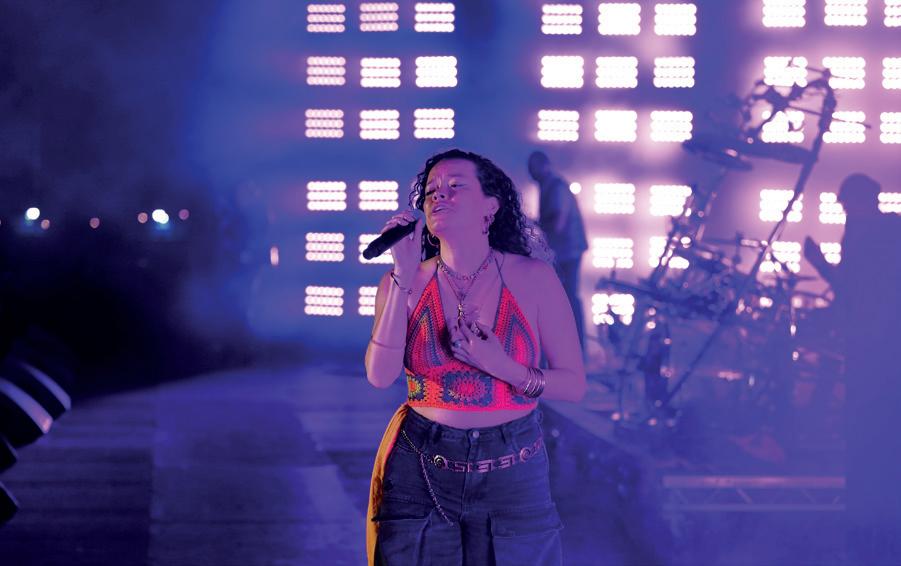

says. The fixture merges a high-performance strobe with a very powerful wash light, and its power and strength also helped compensate for a video heavy stage. “I needed fixtures that could compete with the mass of screens,” he explains. “The XDC1s gave us the intense energy needed to match the power of their music, while the X5 IP Bars helped frame the bottom of the stage with a wall of light.”
Sam Tozer admits he was fortunate that the XDC1 IP Hybrids had just come off the Ed Sheeran tour. “This meant that LCR had enough in stock for this show,” he says. “They provide great service and high-quality kit as well as excellent general support.”
Naturally the GLP fixtures were programmed in full mode: “Using MA3’s new software, it was easy to programme and scale, and also allowed us the capability to create dynamic looks with individual pixel control.”
The man responsible for this, and for directing the show, was Olly Walker. “His knowledge of MA3 helped speed up the process and unlock more programming capabilities,” praises Tozer. “This combination allowed us to create a dynamic show with a very obvious lighting change for each song. Being able to rely on the upgraded fixtures with a small run of arenas earlier in the year allowed us to balance the show better for both the audience and TV.”
GLP solutions have long provided Sam Tozer with his ‘effect’ workhorses – but with the new impression X5 Series platform, the stakes have just got higher.
Switching in and out of NDI mode
Another experienced LD, long familiar with the impact to be derived from GLP’s LED portfolio, is Tom Campbell. He has been working with DJ/producer Joel Corry – who also featured at BBC Radio 1’s Big Weekend – since spring 2023.
For the event he specified a quick-to-install, wheel-on/ wheel-off floor package to complement existing elements of the house design. This included 24 of the new JDC2 IP Hybrid strobes and eight of the JDC Line 1000 (retained from previous iterations around the edge of the riser).
“As the show was in daylight it focused heavily on fixture brightness to ensure it translated well to the audience and cameras on the day,” emphasises Campbell.
The 24 JDC2 IP were integrated into the video screens using their NDI mode. “That said, we also tried to use all the functionality in the fixture, overlaying the video surface with pixel effects to accent the drops, switching in and out of NDI to allow the video moments to stand alone,” states co-designer and programmer, Louie Hodgson. “Using the JDC2 IP and JDC Line enabled us to hone the consistency across the stage, as their beam plates allowed for the same types of strobe effects across the fixture types.”
Fixtures were programmed in Mode 5 (127 DMX channels), each fixture patched in 10 parts. “This allowed each element of functionality to be controlled and programmed independently of the others, keeping the cues clean,” notes Hodgson. “Programming a fixture in 10 parts is inherently more complex than simply a moving light. But as I got further into the process, I could see that treating each element as its own sub fixture was definitely the right way to go – and it helped speed up the programming massively.”
Assessing the new JDC2 IP Hybrid Tom Campbell believes “it really raises the bar for video content integration onstage.” He explains, “The fact that JDC2 simply takes the NDI signal directly and plays the content across the plate is a very powerful idea.”
While the JDC2 IPs were sub-hired by Colour Sound Experiment from Dry Hire Lighting, the former supplied the remainder of the floor package. “Colour Sound did a fantastic job, ensuring that they were prepped correctly for the NDI control,” concludes Campbell.
credit: BBC Radio 1 Big Weekend 2024. BBC Public Service, Sarah

JLL: Elevating Creativity with Cutting-Edge Technology
At JLL, our commitment to supporting the visionaries
| Below: JLL CineGear
of Television, Drama, and Film is unwavering. Since our last feature in STLD Set and Light Magazine, we’ve continued to invest in the most advanced technology, ensuring our clients have the best tools at their disposal. Our latest acquisitions include the Clay Paky Arolla Aqua, Creamsource Vortex 8, LiteMat Spectrum 4, and an expanded inventory of Nanlux Evoke 2400B’s.
Arolla Aqua: Lighting Up the Future
JLL’s investment in the Clay Paky Arolla Aqua is a testament to its unparalleled performance and versatility. With an IP66 rating, this fixture thrives in various outdoor environments, making it perfect for film locations. The Arolla Aqua boasts a powerful 900W LED engine, delivering bright, high-quality light with precise colour mixing and a comprehensive effects package. This makes it ideal for large-scale events like the Global Offshore Wind conference (June ‘24) and high-end television productions such as the Leaders Debate at BBC Scotland, lit by Richard Jarret (June ‘24).
After a successful trip to CineGear in LA, JLL expanded its inventory with additional Creamsource Vortex 8 units. The Vortex 8 stands out as a premier soft lighting solution, known for its exceptional power and versatility. Its 650W LED output delivers high-intensity, full-spectrum light with impeccable colour accuracy, making it a favourite in film and television production. With an IP65 weatherproof rating, the Vortex 8 performs reliably in both studio and challenging outdoor settings. Its innovative design includes high-speed sync, variable beam angle, and seamless control via DMX or wireless protocols, providing unparalleled flexibility and creative freedom.
JLL’s expansion into the US market is marked by a $1M investment in Vital Show Solution, enabling seamless service delivery across all 50 states. Recently, we completed a large-scale event in Houston, Texas, supplying lighting, truss, rigging, power, and a 2.5mm LED video wall for a valued energy client. Our busy schedule continues with projects in Nashville, Dallas, LA, Boston, Chicago, and Las Vegas.

Back at home, JLL proudly supported the new Profile Awards by providing Goody bags. We hope these awards, which focus on the craft of lighting, continue to grow annually. This summer, we are excited to support a variety of Light Entertainment shows and extensive coverage of the Paris Olympic and Paralympic Games.
Litepanels, a Videndum brand, has announced the launch of the new Astra IP Bi-Color LED panel range, marking a significant advancement in durability and weatherproofing features for the renowned Astra line of products.
Building on the success of Astra with over 80,000 fixtures in the industry, the Astra IP range is an environment resilient evolution of Litepanels’ acclaimed fixture. With its robust construction, the Astra IP range is built to withstand even the toughest outdoor conditions.
Available in three different sizes for the perfect fit, from on-street reporting to studio settings.
“This latest evolution of the industry-favorite Astra range shows our commitment to producing fixtures to match our customers’ needs, focussing on fast and practical features,” said Litepanels Head of Product Management, Michael Herbert. “We understand the challenges professionals face in demanding environments, so we engineered the Astra IP range to meet those challenges head-on, providing quality lighting solutions for the toughest assignments.”
Astra IP delivers powerful output to light even the brightest location. Equipped with ultra-efficient LEDs and a tighter beam angle, Astra IP provides flattering and accurate white light from 2,700K to 6,500K at any intensity level, with or without diffusion. An LCD screen provides instant confirmation for users to color match multiple fixtures with confidence.
Built to withstand the rigors of outdoor shoots and adverse weather conditions, Astra IP is IP65-rated for protection against dust and water ingress. The weatherproof design ensures reliable performance in rain, snow, or high humidity environments. With an integrated power supply, and optional Gold Mount, V-Mount and BP-U battery plates, Astra IP is a fast to

set up, dependable lighting solution in any location.
The new Astra IP range includes the following models: Astra IP Half: Compact and lightweight at just 6.2lb/2.8kg, the Astra IP Half offers a powerful lighting solution for small spaces and low ceilings, delivering weatherproof performance with an impressive 1500 lux output at 10ft/3m.
Astra IP 1x1: With a compact form factor and a weight of 9.7lb/4.4kg, the Astra IP 1x1 provides exceptional white light output with 3000 lux at 10ft/3m, delivering exceptional, consistent high-quality white light in any conditions.
Astra IP 2x1: Designed for indoor and outdoor productions, the Astra IP 2x1 delivers practical and highquality white light with a powerful output of 5500 lux at 10ft/3m. Its IP65 rating ensures durability and reliability in challenging outdoor conditions.

60 Martin MAC Ones deployed on Reneé Rapp UK/ EU tour
Award-winning Lighting Designer James Scott recently deployed 60 new Martin MAC One fixtures on the UK/ EU leg of the Reneé Rapp “Snow Hard Feelings” tour. The fixtures were supplied by Siyan Ltd, purchased for their rental inventory from Martin UK distributor Sound Technology Ltd.
“The MAC One was offered to me by Tom Grant at Siyan,” Scott explains. “We were in discussions about the best choice of fixture for what I wanted to achieve on the tour and he suggested this new kid on the block. Bright, compact and fast. He had my attention.”
The LD’s first involvement with Reneé Rapp was at the start of 2023 when she was playing a sold-out Kentish Town Forum show. Regular collaborators, Tawbox brought him onboard to design staging and lighting for the oneoff performance. Following a USA tour which he was not involved in, the tour made its way to UK/EU and Tawbox got back in touch and requested a refresh to the lighting for the end of the touring run.
“The concept and staging layout was mainly inherited from what was already on the road in the USA.” he continues. “I was given certain parameters to work within, such as retaining the band layout and the square LED video wall. In addition to that I had to design a lighting rig that was scaleable and quick to load in and out.”
“The immediate attraction of the MAC One was the compact size of the fixture. Forget about the eye candy effects for the moment, the MAC One, on paper was very attractive due to the stated output, beam range and the compact size.”
Thus in the final design for the tour, a total of 60 MAC Ones were rigged on vertical towers either side of the main square LED wall, with 6 runs of H-frame rigged with 10 fixtures on each. Depending on the venue the design scaled up and down, with the smallest version still featuring 36 MAC Ones.

In addition to the obvious appeal of its compact size to allow deployment quantity, the LD was impressed by the looks that can be achieved by what he describes as “the different personalities of the MAC One’s beam.”
“The fact the MAC One can produce a clean parallel beam and also an old school “ACL” style look where the beam converges really gave me some nice aerial effects to play with.” he says. “Wind out the zoom to around 40% and you are gifted a lovely “fullness” to the beam which can produce a stage wide wash whilst still maintaining some definition to the light produced.”
Subject to the house rig in each of the venues, the MAC Ones were sometimes paired with Martin MAC Aura PXLs, where the exacting colour calibration of the MAC Series came into its own.
“Colour matching between all of the latest generation MAC fixtures are always spot on,” he confirms. “Even in the most basic control mode you still have access to everything you need to produce the colours you require.”
The MAC One’s fresnel lens has also impressed in terms of the looks it can create, especially in conjunction with the large aperture design of the fixture.
“The fact the MAC One is a single source really lends itself to the fresnel lens, you don’t see any chromatic aberration all you are working with is rich beautiful colours from a large aperture lens considering the small footprint of the fixture itself.”
Reflecting overall on the MAC One in use on the tour, Scott concludes, “I was highly impressed, they filled the role perfectly. I like the rigging options available and the fact they are easy to handle and manoeuvre really helped the crew on the road.”
Photo Credit: Andrew Timms

Robe for Brigada Tech TV series
Brigada Tech is a new Spanish TV series presented by Luján Argüelles, directed by Eva Castillejo, and lit by Manuel Ricoy, broadcast on prime time LA1 the first TVE (Spanish Television) channel of RTVE (Radio y Televisión Española, S.A.). The format sees ‘digital mentors’ and popular SoMe influencers assisting people with limited access to the information superhighway in tackling assorted digital challenges that can benefit their day-
to-day living. Each episode was recorded at a different location around Spain, including Avilés (Asturias), Laguna de Duero (Valladolid), Tudela (Navarra), Canas de Morrazo (Galicia), Altea (Alicante), Torrelavega (Cantabria) and Puertollano (Castilla la Mancha) –facilitating a pop-up studio segment, for which Manuel was DoP and LD.
He chose a selection of Robe moving light products – 12 x FORTES, 8 x MegaPointes, 12 x Pointes, 16 x LEDBeam 150s and 12 x LEDBeam 350s – which were supplied by Valladolid-based rental company Use Sonido S.L who purchased them from Robe’s Spanish distributor, EARPRO&EES.
The lights helped produce the streamlined, modern and slightly edgy aesthetic that everyone wanted for this studio aspect of the production, for which Manuel combined techniques and the disciplines from concert touring and television lighting to produce a great-looking show each time in a variety of venues, typically theatres and cultural centres. It was effectively a ‘studio tour’ project.
He worked closely with set designer Joaquín López, as his design helped shape how the show was lit. It was the first time they had worked together and proved a very positive process commented Manuel. This coupled with director Eva Castillejo’s vision and the various venues all defined this new show’s production lighting design. When working in the different venues, 80% of the luminaires were hung using the available house LX bars, with additional flown production trusses or truss ‘totems’ rigged on the deck to complete the design.
Seven of the 12 x FORTES were rigged on the house LX bars to cover the stage entrances and exits, sofa positions – specifically for the cameras positioned at the foot of the stage and at the front of the audience.
The remaining 5 were on an additional truss flown in front of the set, utilised as fill in for the middle part of the sofas, for completing the general lighting looks and to make up presets for when the presenter and guests were in standing positions.
FORTES provided the primary key lighting on the presenter, guests and some audience members who were also prominent in the programme.
Manuel loves the high CRI of the FORTE, the zoom range, and its sheer power especially for the long throws necessary in the larger venues. “Thanks to the quality and consistency of the FORTES, distance was not an issue,” he noted.
The MegaPointes were placed on the first LX bar and the Pointes on vertical truss sections in front offstage positions each side of the set. Both Pointes and MegaPointes completed the camera shots with beams, adding depth to the picture. They were also used to create ‘motion presets’ to accent presentations, guest entrances / exits and the series outro.
Manuel has used both fixtures extensively, especially for situations where camera shots filled with light are needed. “They bring such a huge choice of different effects and can be used in so many diverse scenarios that for me Pointes and MegaPointes are go-to tools for any genre of lighting,” he said.
He particularly appreciates the choice of both fixed and rotating gobos, prisms, colours etc.
The LEDBeam 150s were placed on assorted LX bars over the stage, used to bring flourishes of colour to the set and effects that further boosted its three dimensionality which could be highlighted and made to appear more futuristic at the touch of a button, matching Brigada Tech’s content and concept.
LEDBeam 150s were picked for their intensity and quality of light and for the small size as they had to share the space with other lights in the venue, so they were an ideal choice, and the same was true for the LEDBeam 350s. These were also hung both on the LX bars and on horizontal trussing sections rigged midway around the audience seating – again their small size was ideal – and from both these positions they illuminated the audience very efficiently and looked great on the wide shots.
Manuel has worked with Robe products for several years and says, “Having been able to compare them with other luminaires and brands, Robe offers more quality fixtures than others. I have always favoured Robe for my designs because the results are consistently good and reliable.”
While Manuel concentrated on lighting Brigada Tech for the cameras and photography direction, programming was completed by gaffer / console technician Óscar Marchena Herrero and Jesús Estaban Pelayo who was also a console technician.
The biggest challenges were adapting the recording of each program to the space in which it was being staged, but “thanks to a fantastic lighting team and the creativity and flexibility that the Robe products brought to the table it was all doable,” concluded Manuel.
|
As a freelance DoP / lighting designer based in vibrant Madrid and picturesque green Asturias, he works a lot with acclaimed DoP Iñaki Irastorza, and extensively on news programmes and sports, technology, and entertainment segments. Manuel has been a lighting professional since 2005 working in numerous different disciplines and scenarios, and since 2020 has focused his expertise on DoP work and creating dynamic lighting for multi-camera broadcast environments.
The 2024 Eurovision Song Contest (ESC) was staged in Malmo Arena, Sweden, and was memorable for many elements including a superlative technical presentation which took the show production aspect of one of the largest and most-watched live music broadcasts in the world to new levels of excellence.
Under the show technical direction of Ola Melzig, a team of highly talented creatives, programmers, engineers, network architects and technicians collaborated to stage the first ever in-the-round ESC, breaking technical barriers and records!
Lighting designer Fredrik Stormby of Stockholm-based creative studio Greenwall Design and his team took care of all things lighting as well as co-ordinating the screens content, working in close conjunction with production designer Florian Wieder, and included on the lighting plot were 52 x Robe FORTES, 57 x T1 Profiles and 14 x T2 Profiles.
These Robe moving lights were used to cover all the stage and Green Room key lighting requirements.
Rigged on multiple roof and side trusses flown above and around both these major areas, all lighting equipment was supplied by Creative Technology Sweden together with the video and audio equipment packages.


The show also featured an extensive automation system that helped boost the dynamics of three vibrant live broadcasts – the two semi-finals and the grand finale –encompassing a total of 37 entries. These specific Robe fixtures were chosen for their excellent CRI, intensity, and overall quality of light.
The FORTES were fitted with the HCF (High Colour Fidelity) TRANSFERABLE ENGINE module from Robe’s TE series of ground-breaking self-referencing, datacapturing LED light engines that are all designed, developed, and manufactured at the Robe factory in the Czech Republic.
The 1,000W White 6.000K HCF LED engine offers 35,000 lumens and an exceptionally high inherent CRI of 96, making these luminaires perfect for this scenario. The T1 and T2 both have CRIs of 95 and are already well established in broadcast and theatre worlds for optimising skin tones and colours.
As well as being utilised for general key lighting, several FORTES were configured to run part of an extensive remote follow spotting system, so they could be called up and activated as needed.
“As with any broadcast show, key lighting is one of the fundamentals, so we were extremely pleased that Fredrik was happy to work with these Robe fixtures,” commented Emil Hojmark, CT’s head of lighting for North Europe, who co-ordinated the lighting production. He added that they received “great support from Robe’s technical team” throughout the event period. The load in at Malmo Arena – which also staged ESC in 2013 – started on April 3rd and was preceded by four days’ prep at CT’s warehouse in Malmo, used as a production hub for all the equipment procurement and provisioning.
Fredrik’s programming team included lead programmer for effects lighting Ishai Mika, lead programmer for key lighting Dom Adams, plus Isak Gabre, Linus Pansell and Leo Stenbeck. The assistant lighting designer was Louisa Smurthwaite (who was follow spot caller for the 2023 event in the UK) and the two associate LDs were Mike Smith and Michael Straun who worked in day and night shifts during the five-week rehearsal and development period. The 68th Eurovision Song Contest was organised by the European Broadcasting Union (EBU) and host
broadcaster Sveriges Television (SVT) and was presented in Sweden for the seventh time.
Robe ABTT 2024
Robe UK enjoyed a busy, successful, and positive ABTT (Association of British Theatre Technicians) expo, staged at Alexandra Palace in London, where the company presented two dynamic exhibition areas – a stand upstairs in the main hall, together with a large demo area located downstairs in the venue’s Palace Suite.
Robe also delivered four presentations that were integral to the ABTT’s extended 2024 seminar and discussion programme, which touched on topics related to sustainability and creative lighting.
The clean and streamlined main Robe booth occupied a prime position in the main exhibition hall and featured some of Robe’s newest lighting technologies designed for theatre, performance, TV, and broadcast scenarios, together with selected Anolis, Avolites and Artistic Licence products. Atmosphere and haze specialist MDG, which is distributed in the UK by Robe, was also present on the stand.
Running in parallel downstairs from the main exhibition – for the second year – Robe coordinated product talks and a black box demonstration area to demo more fixtures ‘in situ’.
The product presentations from Robe’s Will Blackie, Chris Purnell, and David Catterall, each lasted approximately 10 minutes and were sharply tailored to run through all the pertinent points quickly and efficiently, capitalising on attention spans!
David Catterall hosted two of Robe’s presentations. “What has sustainability done for me?” which explored some of the ‘secrets’ of sustainability in lighting, and “Upgrading to LED? – Planning for financial and artistic success” which focused on the transition from tungsten to LED and was packed with interesting financial and artistic facts-and-figures for those considering the conversion.
Dave Whitehouse talked about “CRI and Colour Temperature – why they are so important?” including sharing vital info on how to make the best LED selections for lighting people, costumes, and sets.
In “Planning to replace your houselights? - what to consider” – Anolis’s Ashley Popple discussed the importance and impact of houselights in installations, highlighting safety and architectural features and how to plan and execute upgrade projects.
The seminar programme was very popular this year, and the Robe team was keen to share its knowledge and experience as part of ABTT’s educational and learnership initiatives.
Robe’s architectural sister brand Anolis displayed products from its Ambiane, Eminere and Calumma ranges and ran an iProMotion demo in the Palace Suite.
Avolites – a Robe Business – highlighted their D9 and Tiger Touch II lighting consoles in the Palace Suite demos, with busy sessions overseen by Ron Carrington and Sarah O’Gorman.
Robe UK’s Ian Brown concluded, “ABTT is always a great show! It feels completely unique from others around and allows for professionals to come together to interact with familiar faces, as well as make new connections. With the demo room arrangement, the team could showcase products to visitors for around 20 to 30 minutes each, which worked very well. Utilising headphone technology, both the ABTT seminars and the Robe demos which were in the same area could run simultaneously and more efficiently without interference.”

Adam Langdon is a virtual production videographer and cinematographer with a strong background in photography. He recently shot a sci-fi espionage short film, entitled Evenfall One, which was set on a spaceship orbiting a sun. To convey the story’s mood and atmosphere, Adam required powerful lights to simulate the solar illumination bathing the ship’s observation deck. Adam explains below how he used a Triple DMG MAXI – three DMG MAXI fixtures on a Triple Yoke – to supplement the illumination from the virtual sun displayed on the LED wall of their spaceship set.
The story of Evenfall One takes place on the viewing deck of a spaceship orbiting a sun. To create the scene, we shot on an LED volume at Garden Studios. The light from the LED wall wasn’t enough to create a final look, so I incorporated three DMG MAXI fixtures stacked on a triple yoke.
|
The Triple DMG MAXI was perfect to emulate a bright sun for a reverse shot on our LED wall. I used the fixture’s Firelight Effect for close-ups of the talent on the reverse shot. This effect added to the caustic light reflection that can be seen on the walls.
Because we were able to control each panel separately through the myMIX® app, it meant I could shape the light around the talent – instead of having one large uncontrollable panel light. One of the biggest problems you face when shooting on LED volumes is glare from the wall being reflected back. By being able to control each MAXI unit separately, we managed to get around the glare while keeping our desired look on the talent.
I set the colors on the MAXI fixtures using the GEL MODE on the myMIX app. For the wide shots, where the MAXI fixtures were being used as additional fill, I used a mix of #E652 Urban Sodium and #R325 Henna Sky across each panel. I also had physical gels on my conventional heads to blend all of the lighting together.
The Rosco MIXBOOK allowed me to test the gels before I had access to the MAXI fixtures. I received the Triple MAXI for a test shoot a few days before the filming started, so I was able to save all of the settings I had discovered with the MIXBOOK to my iPad. This meant we didn’t require a lighting desk operator, which was helpful because we were running on quite a small team of people already.
I chose to use DMG MAXI fixtures because of their versatility. When used correctly, the Triple DMG MAXI setup is not only a large, powerful light source, but you can also shape the light across the entire panel. Combine


this with how lightweight they are, and the overall output of each head – and you have a fantastic lighting tool for working with LED walls.
Photo caption: Adam used the Firelight Effect from a Triple DMG MAXI to illuminate the actors for close-up shots.
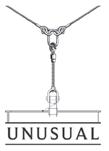
Unusual Rigging & Engineering is a big screen hit, with Dune: Part 2
When the UR&E team received a job enquiry back in July 2022, nothing seemed particularly out of the ordinary about it. Little would they know that 18 months later, they would be involved with one of the biggest box office successes of the year on the set of Dune: Part 2.
The epic science fiction film, produced by Legendary Pictures, directed by Denis Villenueve and distributed by Warner Bros Pictures, is the sequel to Dune (2021). It follows Paul Atriedes as he unites with the Fremen people of the desert planet Arrakis to wage war against House Harkonnen. SO far this year it has grossed over $197 million making it the fifth highest grossest film of 2024.
The UR&E team was asked to supply a rental of almost 2000rm of truss in 30cm, 40cm and 52cm, that required delivery as far as the Liwa Area of Abu Dhabi. Unlike other projects in theatres or arena shows where the requirements are known well in advance, the movie set experience couldn’t have been more different.
Denis Bramhall, Managing Owner together with Joie Salar, Project Coordinator at UR&E said: “The greatest challenge on this job was the increasing and changing requirements day by day with the rental period overlapping from one LX Rigging Truss requirement to another Grip Truss, and having to make sure that all truss requirements were supplied on time. This was all happening between October to December – our busiest season of the year. Fortunately, we have a warehouse resembling Aladdin’s Cave and so their wish was our command – but it really stretched us to the limit.”
Ian Mussell, Key Rigging Grip, Dune: Part 2, Abu Dhabi unit added: “Our project involved some very complex three dimensional structures that would not have been possible without the large variety of truss and motors that Unusual Rigging made available to us. We used a huge quantity of truss in different grades and everything we asked for was available and supplied perfectly. URE were an extremely valuable resource to the grip and lighting departments during the production of the movie. They were very quick to react to our ever-growing requirements and always extremely well spirited and helpful. I can’t recommend Unusual Rigging & Engineering enough!”

Version 2 Supports Lighting Director David Bishop for This Year’s Britain’s Got Talent Auditions
Presided over by the famous judging panel of Simon Cowell, Amanda Holden, Alesha Dixon and Bruno Tonioli and hosted by the multi award-winning presenter duo, Ant and Dec, Britain’s Got Talent, brings glitz, colour, chaos and an inordinate amount of fun to the UK’s television audiences every spring.
As contestants battle it out to reach the top spot – this year won by singer Sydnie Christmas, to the tune of £250,000 and a coveted place on the Royal Variety Performance – viewers tune in at an average rate of 5-6 million per episode, with the first episode watched by over 12 million viewers, making BGT ITV’s biggest entertainment show this year.
2024 marks the third year television, broadcast and event lighting specialist, Version 2, has supplied the lighting, distribution, cabling, control equipment and supplementary truss for the series’ fun-filled auditions, all of which were filmed over two intense week-long sessions at the London Palladium and Manchester Lowry.
The series was lit again by award-winning lighting designer, David Bishop, who was happy that Version 2 won the tender process for the series once more, and specified fixtures that would give him the tools to add the flexibility, colour and sparkle his work is known for.
His selection included Robe Spiider, Spikie and Forte fixtures, Martin Mac Aura XB Wash and Rush Par 2 and Rush Par 3, ETC Source Four LED S2 Lustr, Chauvet Colordash Battens and Accent, and GLP X4 Bar and Fusion Sticks, all of which were sourced from Version 2.
“Version 2’s attention to detail is fantastic and any problems are fixed with no fuss,” says Bishop.
“They go above and beyond what I ask for, adding any details I may have forgotten or overlooked. They ask the right questions and actually contribute to the process of getting every aspect of the system right.”
The auditions are recorded as live in front of capacity theatre audiences with just 2 days of rigging and focusing before launching into the daily audition schedule. This involves two daily sessions of 10-12 acts per session, with a complete change of audience between sessions, repeated for 8 days at the Palladium and again for 6-7
days at The Lowry.
“We see a lot of acts!” confirms Bishop. “Around 20-25 per day. We need to be able to react nimbly as the auditions are formatted as traditional unrehearsed theatre auditions to give everyone a level playing field. So, with the exception of a few magic acts or an act with very specific lighting requirements, we never know what we are going to get! It’s full-on variety and we have to be ready to operate the lighting on the fly.
“By changing from a previously largely conventional to an automated rig, I can accommodate this a lot more quickly and we can tweak things remotely as we go along. I had two programmers across this series: Tom Young and Adam Marshall - the royalty of the programming world - who look after key lighting, effects lighting and the media server all on one desk which is quite a big ask. Luckily they are both very quick!
“We have a carefully balanced stage wash and our house look for 85-90% of the acts. We try not to give many specific lighting cues as it detracts from the ‘audition’ format, and we need to keep something in reserve as there needs to be an editorial progression from the auditions to the more structured look of the final shows.
“As a general rule of television lighting, you never want to see a light source which is both a blessing and a curse. You can hide fixtures, which is one reason why everything looks so glossy, but a theatrical back drape for example, presents a large empty black space on camera. I wanted a multi-cell fixture that could sit there twinkling in the background to give some animation and energy to the stage, and fill some of that black space, which is where the Spiiders, X4 Bars and Fusion Sticks came in handy.
Bishop also subtly lights the audience to ensure their reactions can be seen on camera which he does using Source Four Lustrs. “This means I can keep the light very carefully off the judges at the front of the auditorium and the cameras by using the shutters, but it also means I can adjust the tint of the light to a low level of warm light so it feels like they are just lit by the glow of the stage lighting, rather than actually being directly lit (which they are!).”
A lot of effects lighting utilising the Spikies and more Fusion Sticks are also built into the back of the stalls, the circle and the upper circle for greater interest in the back of the shots whenever the camera looks into the auditorium. These Bishop also incorporates into dynamic lighting reactions to the Golden Buzzer or Red Buzzer moments so, to the tv audience, the whole experience looks totally immersive.
Of course, Bishop also has the responsibility of making sure the 4 judges all look their very best “so we give their lighting a lot of attention.” Some more than others? “Let’s just say they are all very happy with what I do!”
Bishop has enjoyed a long-standing relationship with Version 2 since the start of his career and says they are his first port of call for his television work.
“One of the main reasons I like working with V2 is the people: I have a very good, long relationship with all
of them, and my account handler, Simon Perrott, is just brilliant at solving problems. He takes anything I throw at him and makes it happen!
“The V2 team take everything in their stride and I never feel that I’m on my own, which is very reassuring in live performance. And because of the volume of work I have to deal with, it’s essential that I can just fire things at them and know it will be taken care of. They also offer great support to my gaffer, Mark Newell, who takes my lighting design and actually makes it work! I feel they have my back covered at every stage.”
Simon Perrott, Version 2 Senior Project Manager, adds: “It’s been fantastic to be back working with Julie Burfoot and the team at Thames; it’s one of the enjoyable productions we look out for in our calendar. As a household name, it’s an honour to be supporting Dave and his Team on this flagship TV production.”
Please credit all photos as Courtesy of Thames/ Freemantle
TV LD Oli Richards uses multiple Martin MAC Ones on The Jonathan Ross Show
“Design is my thing. Lights are just lights.” says TV lighting director Oli Richards. “Which is why people don’t tend to ask me about their fixtures! But I really enjoyed using the MAC One!”
Twenty of Martin’s smallest MAC moving heads, the new MAC One, were recently supplied by Version 2 lights to renowned TV lighting designer Oli Richards for use on The Jonathan Ross Show.
The new compact, lightweight fixtures were suggested to Oli by Nick Edwards at Version 2.
“In my designs I love to use lots of one thing.” Oli explains. “The MAC One is perfect for that. Small, designed to be used in multiples, and importantly budget friendly to use in quantity.”
| Below:
V2 Britain’s Got Talent 2024 - First Look
At just 4.4kg, the MAC One is extremely compact and highly versatile. A Beam/Wash, with Fresnel lens, custom 120W, 2500 lm light engine, and impressive light quality,


the MAC One is everything you’d expect of a MAC Series fixture, with the benefit of allowing more fixtures to be used in a show without compromising weight or space limitations.
“The look I wanted for this particular show was essentially a back wall full of small moving head minipar cans. Controllable moving head par cans.” he says. “Bands sometimes specify a colour palette to work with, but on this occasion I just wanted a tungsten look.”
Working with director Chris Howe regularly, Oli knows his preference for “very cinematic looks with random flares, happy accidents”.
Having trained as a photographer, Oli describes himself as a technical designer where his focus is very much the overall look and says “I surround myself with the best programmers, techs and crew.”
Alongside its flexibility and quality of output of the MAC One, Oli is a fan of its physical aesthetic.
“I think I will always use them in shot,” he says. “I tend to avoid large-faced pixel-enabled fixtures, they are not for me. But with the MAC One I loved the simplicity and beauty of the lamp itself as a sculpture on set, and together with fresnel lens which looked great on camera, I’ll definitely be using again.”
The Jonathan Ross Show.jpg Credit: Brian J Ritchie/ Hotsauce
Joe Marter becomes General Manager at Version 2 TV, broadcast and event lighting rental specialists, Version 2 Lights has announced the promotion of Joe Marter to General Manager.
| Below:
V2 The Jonathan Ross Show

Marter joined V2 four years ago this week as a Project Manager, and has since worked on a number of highprofile productions, most notably the Platinum Jubilee of Queen Elizabeth II. Interestingly it was also this week, 10 years ago that Joe joined Aurora as a Technician. The progression is a testament to Joe’s hard work, dedication, broad skill set and attention to detail which has seen him come through the ranks.
Joe’s new role at V2 will see him assume full day to day internal responsibilities at our Childs Court Farm Campus. Joe will continue to project manage a small number of long-term clients, with Simon Perrott taking on a Senior role within the Rental Team.

Kathy & Stella Becomes First West-End Show to Use Macula System Thanks to White Light
Currently running at the Ambassadors Theatre in London’s West End, Kathy & Stella Solve a Murder! is an awardwinning musical comedy which follows Kathy & Stella – hosts of Hull’s least successful true crime podcast. However, when their favourite author is killed, the pair find themselves thrust into a thrilling whodunnit of their own. The show features a lighting design by Peter Small who approached White Light (WL), a d&b solutions company, to supply his rig, having previously done so for the show’s Bristol and Manchester run. For the London production, an addition to the rig included the Macula remote followspot System – distributed in the UK by Sound Technology Ltd - making the show the first in West End history to use this ground-breaking technology.
Kathy & Stella arrives in London following its previous sell-out runs in Edinburgh, Manchester and Bristol. Peter describes it as ‘a big, fun, in-your-face musical that’s packed with comedy and colour. It’s busy and fast and the pace and tempo just keeps increasing as the night goes on!”. Being a comedy, a musical and a whodunit, the show covers a variety of genres – all of which Peter had to encompass into his lighting design. He explains: “The lighting works very hard to support the fast-paced storytelling, which features numerous musical numbers which each have their own identity and aesthetic. On top of that, the lighting has almost empathetic qualities, moving with the characters ebb and flow of energy during certain moments. My challenge was to hit all of these emotive and technical briefs yet do so within the contained, boxed-in nature of the set”.
Prior to its transfer to the West End, the show, naturally, underwent several changes, from its original staging through to now. However, it would need to continue changing when it eventually arrived in the capital. Peter states: “The main challenge for us was trying to fit the show into The Ambassador’s which is by far our smallest theatre to date! This took a lot of close work across departments and the theatre to ensure everything could fit. Safe to say the theatre is full, wall to wall, top to bottom. We’ve even removed the theatres’ equipment substage and stored it off site to make space for racks and follow spot controllers”.
This confined space meant that Peter had to be meticulous with his lighting design and find new solutions to be both creative yet practical – which is where the





Macula system came into play. Macula is a fixtureagnostic remote-controlled followspot system, offering unprecedented performance thanks to its incredibly high-resolution fluid head and simple, yet powerful, software control. Perfect for venues in which traditional followspot solutions just aren’t feasible, it gives users the organic feel of handling a followspot and is compatible with numerous manufacturers’ fixtures. He comments: “Previously, we had used traditional follow spots but the limited space within The Ambassadors meant this just wouldn’t be possible. That said, my design utilised the spots, in this case Ayrton Eurus, almost the entire time with many fast moving targets (people whizzing about on modified desk chairs with rollerblade wheels on!) so I had to find some sort of solution to make this work. Whilst it had yet to be used on a West End show, I’d seen the Macula System at various tradeshows before, and so asked WL’s Stuart Porter to arrange a demonstration of the equipment for this production. I was keen to be able to use a fixture of my choice, that would be bright, responsive, stable and have the support to enable a smooth process as we set-up home at the Ambassadors. I’m delighted to say that using the Macula system was a complete success. Once the system was up and running, the operators quickly got their head around it and were using it with complete ease. As we fine-tuned the show, the system itself brought forward some quite interesting revelations. For example, it allowed us to program all the fade ups which resulted in a much smoother pickup rather than the operator trying to control the intensity fader and follow at the same time. Similarly, it also allowed for the (expected) perks of snap blackouts etc. In short, it’s a system which paid dividends on this production and which I would use again a heartbeat”.
Alongside the Macula System, Peter’s rig consisted of SIXPARS, Viper Performances, Auras, ColorSource Spots, various atmospherics and a slew of generics. There
| Below: Whitelight Kathy & Stella 3 © Ellie Kurttz
is also a significant array of practical lighting, including metres of LED tape, LED pixel festoons, LED neons, light boxes, light bulb signs, fake fluorescent fittings, pendants, smaller practical lamps, fairy lights, rope lights, LED tubes, disco lights and mirror balls, custom-commissioned wireless practicals (light up phones and books) as well as a brand new concept in making a light up Laptop (software provided by Doug Finlay). Peter explains: “The SIXPARs are the DNA of the design, given the whole rig is visible and largely symmetric (by choice). These are most prevalent as a toplight grid which is used for power and impact as well as a plethora of effects and ways of breaking up the space. This logic is repeated in a sidelight system with the high component being Auras which then can do various focuses in the air/stage/house when not resting in a pipe end focus. Mixed in with the high amount of LED sources is a lot of tungsten to cut through it all and just glowing them into the design can really make a costume pop or fill out a picture. I’ve enjoyed pulling at the extremes of a big, strong saturated LED look and then going to a very dim solo tungsten source. The show is ultimately very human and it’s important to me to have that tungsten element firmly in the mix”.
WL’s Hire Business Development Manager Stuart Porter states: “We’re thrilled to be working with Peter on this show – even more so due to the fact that this marks the first time that the Macula System has been used in the West End. As a company, our ethos is to work closely with designers and ensure we provide with them exact tools and technology to bring their design to life – which is exactly what we did on this occasion. Given this initial success, I’m sure the Macula system will now be part of many West End lighting designs moving forward”.
Kathy & Stella Solve a Murder! opened at The Ambassador’s Theatre last week and will run until 14th September 2024.

Chairman + Sponsors’ Liaison
Bernie Davis 07860 662 736 chairman@stld.org.uk
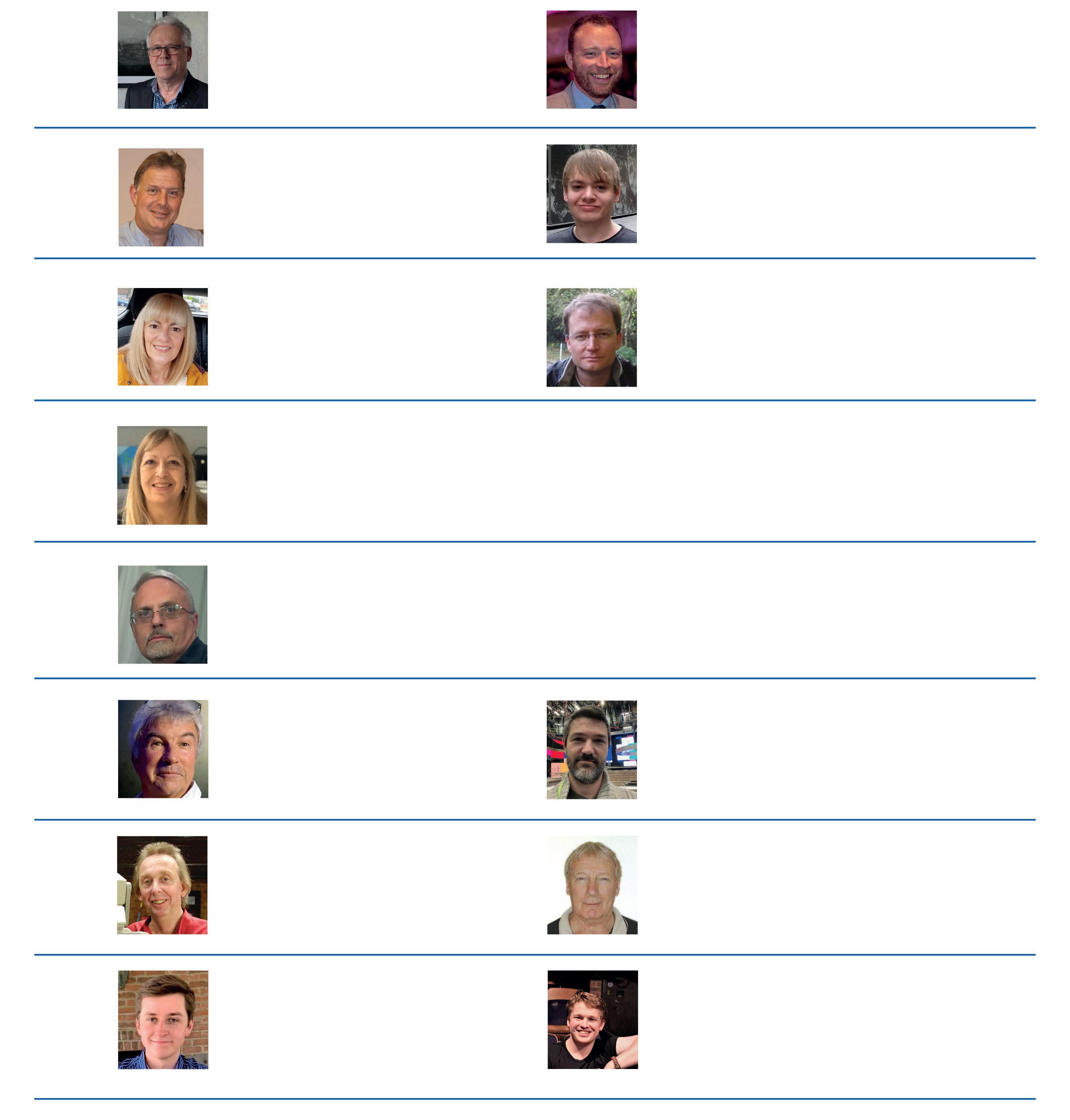
Deputy Chair
David Bishop 07971 796 742 davidbishop@stld.org.uk

Hon Secretary
Stuart Gain 07774 161 996 secretary@stld.org.uk
Magazine Editor + Sponsor Administration
Emma Thorpe 07850 709 210 editor@stld.org.uk
Membership Secretary
Susie Tiller 07786 253 857 members@stld.org.uk

Treasurer John Piper johnpiper@stld.org.uk
Publicity
Andrew Harris 07973 745 583 publicity@stld.org.uk

Admin & Data Officer
Paul Middleton 07720 446 921 paulmiddleton@stld.org.uk
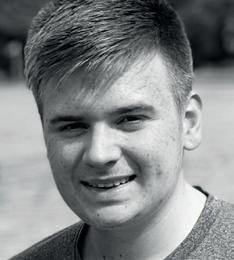
Exhibitions
Alan Luxford 077867 536 522 alanluxford@stld.org.uk
Student Liaison
Georgia ‘Gee’ Elsdon georgia.elsdon@stld.org.uk
Student Liaison
Aaron Parker aaron.parker@stld.org.uk
Committee Member
Ian Hillson ianhillson@stld.org.uk
Committee Member
Matt Maller 07901 724 487 mattmaller@stld.org.uk
Committee Member
John King 07860 759 294 johnking@stld.org.uk
Committee Member
Nathan Mallalieu 07805 461 162 nathanmallalieu@stld.org.uk


https://europe.4wall.com/















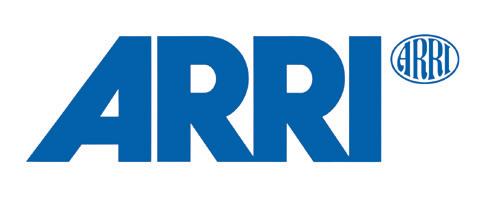




https://celebrostudios.co.uk
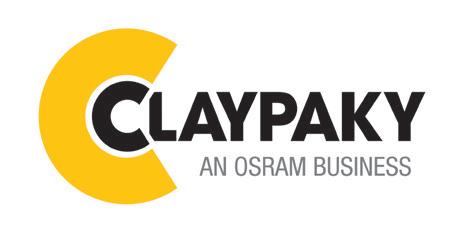



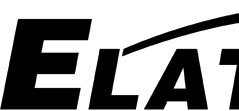
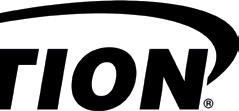













www.limelitelighting.co.uk























www.panavision.com


https://emea.rosco.com/en


www.unusual.co.uk


www.whitelight.ltd.uk





https://rotolight.com


www.vari-lite.com


www.richardmartinlighting.co.uk


www.stage-electrics.co.uk


www.vectorworks.net






https://v2lights.co.uk

can have these pages updated easily by emailing: sponsors@stld.org.uk | www.stld.org.uk/sponsors


P02 STLD @50
P05 Version 2
P11 Ayrton
P15 Lite Panels
P17 The Profile Television Awards
P21 Showlight 25
P31 Elation
P33 Backup Tech
P37 Rotolight
P38 GLP
P58 Limelite Lighting
P68 ELP
